
FREE | WINTER 2021/2022 PRODUCER Sponsored By: THE MODERN IN THIS ISSUE: Colony Visit: Platte Colony, SD Cool Cells The FIVE Freedoms Greenwald Remodel A&A Van Ginkel ESF Upgrade Podcast Highlights Kids Activities & Guest Articles!
FROM NEW STANDARD GROUP
Greetings and welcome to the seventh edition of The Modern Producer magazine. The continued support from our readers and contributors makes all this possible. Thank you!
New for this issue, we are pleased to announce that this is the first time we have opened up the Modern Producer to outside contributors for new and infromative content. Fresh perspectives and project outlines helped round out this issue in a new way. With this addition, we know The Modern Producer will continue to evolve and grow into a staple for news, innovations, and knowledge in the animal husbandry world.
2021 has been quite the year for New Standard Group as we have recently announced our merger with AgriHub, based in Winnipeg, Canada. The upsides of this partnership are just now unfolding to our clients, and we are ecstatic to now have access to new product lines, consumables, building partners, and more. New Standard Group is now truly your one-stop shop for all things, pork, poultry, and now dairy and more.
Finally, we hope you enjoy this issue of the Modern Producer magazine. It's our pleasure to share these insights, new ideas, knowledge, and more.
Sincerely, Tim, Kevin & Kees
P.S. Rest assured, even though we now have so much more to offer, the coffee is still on, and when you call, we'll answer. We look forward to seeing you in 2022.
New Standard US Tim Kurbis 605-496-9696 info@newstandardus.com
New Standard Ag Kevin Kurbis 204-485-4600 kevin@newstandardag.com


New Standard West Kees (Kase) van Ittersum 403-650-5051 kase@newstandardwest.com

2
3 TABLE OF CONTENTS WINTER 2021/2022 Animal Safety and Positive Pressure Ventilation Cool Cells: More Than A Lifeline Platte Colony The Five Freedoms Save Time, Feed, and Money Podcast Highlights ESF Remodel At A&A Van Ginkel Farm Why CO2 Sensors More Than Parts Coloring Contest Word Search Greenwald Remodel 6 4 10 16 19 & 32 20 22 24 33 35 36 34 Produced and Published By New Standard Group Editors Tim Kurbis Kevin Kurbis Kees van Ittersum Design, Layout & Copy Edits 5j Marketing + Design LLC Special Thanks To Platte Colony Britt Roman & Munters Mikeal Kirk Pig Easy A&A Van Ginkel Farms Greenwald Colony Nooyen Subscribe or Contribute TheModernProducer.net Advertising Inquiries TheModernProducer.net/advertise Cover Photo Platte Colony via drone The Modern Producer Copyright 2021 All Rights Reserved.
COOL CELLS MORE THAN A LIFELINE, IT’S A WAY OF BARN LIVING
By Tim Kurbis
This past summer, Tim put up a screenshot of what happens when you turn on cool cells for the first time. There was a temperature drop of more than 7° F in a 15-minute window, which was excellent and certainly made Michael at Goldenview Colony happy. There is, however, so much more to cool cells, and understanding how to maximize their effectiveness can allow even more impressive results.
UNDERSTANDING THERMAL MASS
With temperature regulation in livestock housing (where there is always significant air exchange), understanding how thermal mass affects the environment is necessary to good decision making. Thermal mass as applied to a barn is simply the “bulk” or mass of a building (concrete, wood, steel, and even the manure in the pit). All this mass is a storehouse for thermal energy. In essence, if the mass of the building is cooler than the ambient temperature, it will draw energy in. If the ambient temperature is cooler than the mass, then energy will be released into the air.
In a typical barn, a hot summer day would look something like this:
MORNING
In the morning, the barn starts cooler, and if the outside temperature has fallen below 70°F overnight, then the mass of the building will have released a significant amount of energy.
As the day warms up, the temperature within the barn trails the outside temperature as the thermal mass becomes a heat sink that sucks up some of the heat and begins to store it.
AFTERNOON
Later in the afternoon, the outside temperature will peak and either plateau or drop slightly and then fall in the evening.
The temperature within the barn will also peak shortly after the outside temperature does and plateau as well.
EVENING
As the evening cools off and the incoming air becomes cooler than the thermal mass of the building, the thermal mass will begin to release the heat back into the air. The temperature within the barn will stay relatively close to the daytime peak for several hours after the outside temperature starts to fall off.
If the outside temperature drops low enough overnight (lower than 70°F), the thermal mass will shed the bulk of the stored heat, and the cycle will repeat the next day.

RESULTS
You can usually see this cycle on graphs as the room temperature usually does not drop to a desirable level until the middle of the night but will lag the outside temperature in the latter part of the morning.
The wrench in this cycle is the problem detailed above: the thermal mass cannot shed the stored energy at night. In that case, if the outdoor temperature does not fall below 70°F but instead holds in the 75°F+ range, then the energy stored within the thermal mass does not get released. Then in the morning, when the temperature starts to rise once more, the heat sink we rely on to absorb heat during the day is “full” or fuller, if you will. In this scenario, the temperature in the room will peak sooner and likely rise more as the cumulative effect of body heat and air temperature cannot be put anywhere except out through the exhaust. If your exhaust power is high enough, this may be enough, but it will still get warmer sooner and stay warmer longer.
Enter Cool Cells
This is where the cool cells can be the rock star you need to maximize performance if you use them with thermal mass and its capabilities in mind.
Lets imagine (or look at the reality of the graphing in the pictures) for a moment and see what happens if we not only cool the mass as much as possible but help it stay cooler during the day. What you see in the screenshots below is that the whole barn starts to stay cooler even on hot days when the combined power of cooling and a giant heat sink work together to absorb heat energy during the day. Now we’re talking effectiveness! Now you can begin to see what the possibilities are!

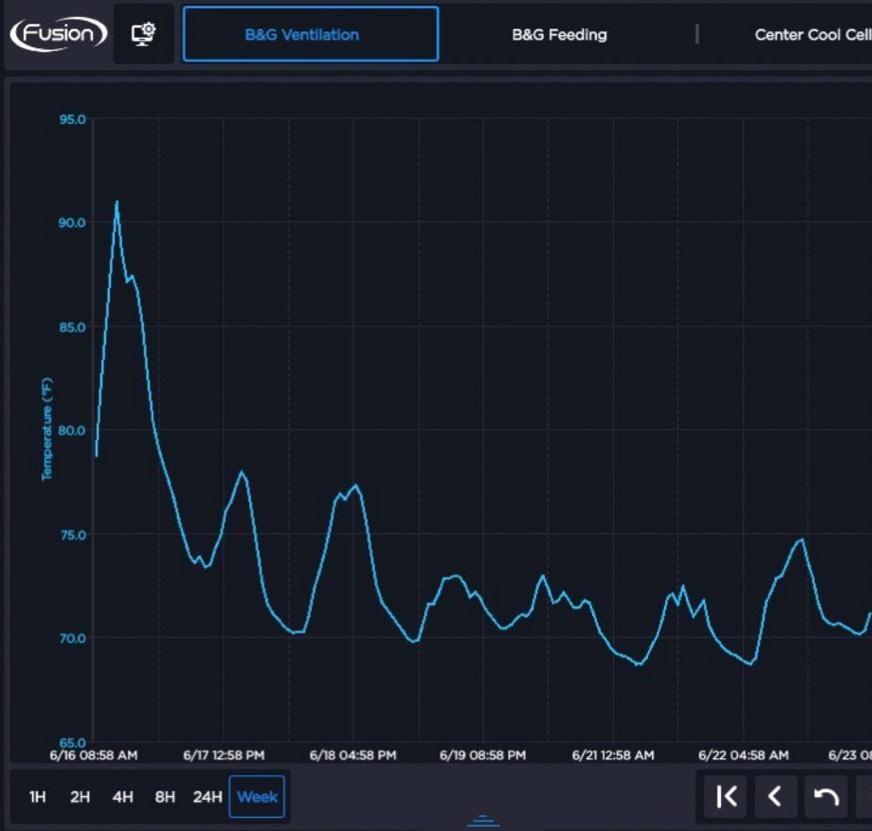

Seven-day barn temperature graph following cool cell activation.
Initial temperature drop over fifteen minutes
Seven-day outdoor temperature graph
We wanted to show all of this for one simple reason. We want guys to understand how important it is to stay in front of the heat when it comes to cooling. Too many managers view cooling devices as a form of rescue to help when everything else fails, but that is not the proper way to view or utilize cool cells. Cool cells should be used to give your barn a running start each day, a way to prevent needing rescue in the first place.
When you start thinking of how to achieve the best start to each hot day, your animals will thank you, your workers will thank you, and your wallet will probably thank you as well.
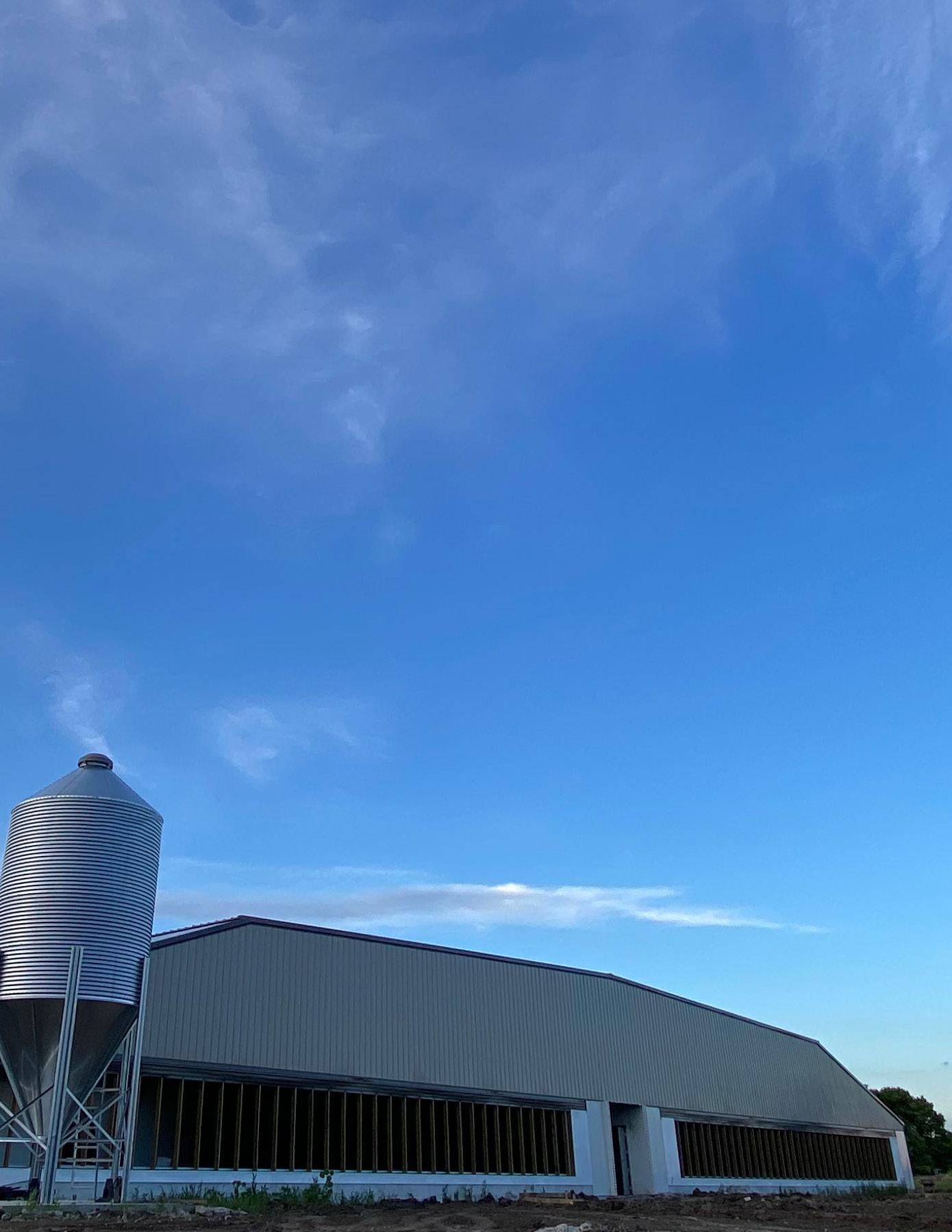 Cool Cells at Grand River Colony
Cool Cells at Grand River Colony
ANIMAL SAFETY AND POSITIVE PRESSURE VENTILATION
By: Britt Roman, Munters Corporation
Third-generation farmers, and owners of Iowa Select Farms, Jeff and Deb Hansen, started with humble roots in 1976, farrowing just three sows. Through passion and hard work, Iowa Select Farms was born and has grown steadily to become the fourth-largest pork producer in the United States.
From 2013 to 2017, Iowa Select Farms needed to create 30 filtered positive pressure sow farms and 10 positive pressure gilt developer units through a combination of remodeling and building new barns. At less than half the cost of building new barns completely, retrofitting some of their existing structures with new equipment made the smart economical choice for Iowa Select.

Proactive PRRS Mitigation
Porcine Reproductive and Respiratory Syndrome (or PRRS) remains a serious concern for all swine operations and can cause significant operational and financial stress. Iowa Select Farms is proactive in their pursuit to mitigate PRRS; what makes them unique is their dedication to innovation. They are forward-thinking, open to technological innovations and use scientifically-sound principals in all stages of pork production.
Because PRRS impacts both the sow and piglet, Iowa Select works hard to ensure the 242,500 sows across their 48 sow farms are protected from an outbreak in full measure.
Enter, Munters.
been designing and refining filtered swine facility ventilation for many years working with some of the top hog
Munters
6
has
“Munters had a ready-made design to do positive pressure on a remodeled barn. And, the Munters Drive fans are made to run at higher static pressures, without additional electrical usage.”
– Environmental Projects Manager, John Stinn
producers to create the Positive Pressure Ventilation Design. The latest innovation in livestock ventilation incorporates air filters, evaporative cooling with CELdek, Munters Drive VX51 Fans, BI28 Inlets, and actuated outlet walls – all carefully engineered to create a Positive Pressure Ventilation System to protect animals from outside contaminants. Today, over 300,000 sows are currently using this system.
Additionally, all of the barns use Munters Drive, an Electronically Communicated (EC) motor and drive solution that reduces electrical usage and maintenance, helping to reduce their carbon footprint, save money, and usher in a greener approach to ventilation.
How it works
Outdoor unfiltered ambient temperature air passes through the filter wall, removing airborne pathogens. Then the air hits an evaporative cooling wall to cool warm summer air. Munters Drive VX51 fans precisely pressurize the attic with filtered and cooled air. As the building becomes pressurized, the BI28 Inlets allow the precise amount of air to maintain temperature and airflow. Munters backdraft shutters prevent pressure drops and backdrafts in windy conditions. An actuator with pipe drive systems adjust curtain openings to maintain constant pressure and provide an outlet for metabolic gases.

Porcine Reproductive and Respiratory Syndrome
Swine farmers in Iowa are actively fighting the battle against Porcine Reproductive and Respiratory Syndrome (PRRS) every day. A PRRS outbreak can cost upwards of $225 per animal to remediate and it is estimated to cost the industry $664 million in the United States each year.
This top-down ventilation ensures condensation is reduced to help prevent building rot and unlike a negative pressure systems where even the smallest air leak can let unfiltered air in, a positive pressure barn is continually pushing air out. Even small cracks don’t impact the filtered air. Munters Drive is made to run at higher static pressures than typical agricultural fans without additional electrical usage. The infinite variable speed allows them to fine-tune both the temperature and pressure in the barns. Munters Drive is programmed to run at a constant speed with no loss from belt wear, ensuring proper airflow that maintains attic pressure with minimal maintenance.
The Result
Iowa Select estimates that the Munters design pays for itself entirely by preventing two outbreaks. Additionally, they estimate an eight-fold decrease in PRRS outbreaks. In 2017, less than two years after the farm’s positive pressure filtration remodel was complete, their pigs per sow per year had jumped 25 percent and pre-wean mortality dropped 19 percent. What’s more, their employees have reported experiencing a healthier and more satisfactory work environment. They also have a healthier herd that is easier to manage. Anyone who knows the Iowa Select Farms crew knows how important their staff and community are. Their passion is greater than the day in-day out of caring for their herd.
7
VX Fans 51” with Munters Drive
“The positive pressure filtration has made a noticeable difference in air quality and our ability to keep pigs cool and comfortable— there’s never any variation in temperature no matter where you are in the barn.”
– Farrowing Department Head, Melissa Mayer
Outdoor unfiltered ambient temperature air passes through filter wall, removing airborne pathogens (1). Then the air hits an evaporative cooling wall to cool warm summer air (2). Munters Drive VX51 fans precisely pressurize the attic with filtered and cooled air (3). As the building becomes pressurized, the BI28 Inlets allow the precise amount of air to maintain temperature and airflow (4). Munters back draft shutters prevent pressure drops and back drafts in windy conditions (5). An actuator with pipe drive systems adjust curtain openings to maintain constant pressure and provide an outlet for metabolic gases (6).
“For a long time, we were the poster child for what positive filtration can do for a sow farm. We went from endemic to complete cleanup.” – Sow 11 Manager, Lance Lawrence First Positive Pressure Filtered Barn at Iowa Select.
Premium Ventilation Systems

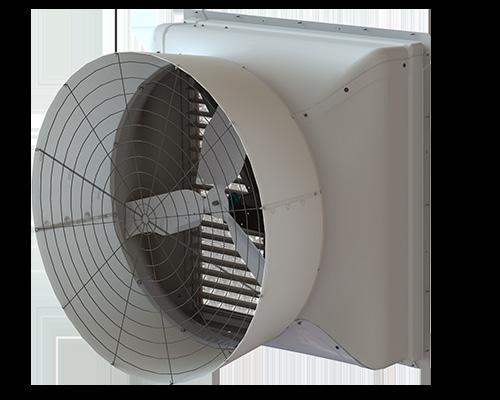

Munters is the world leader in livestock ventilation systems. Our complete ventilation package will protect your animals and help you maintain peak production. Munters Drive provides up to a 40% reduction in electrical usage and is nearly maintenance free, helping to reduce your carbon foot print, save money and usher in a “greener” approach to ag-ventilation.

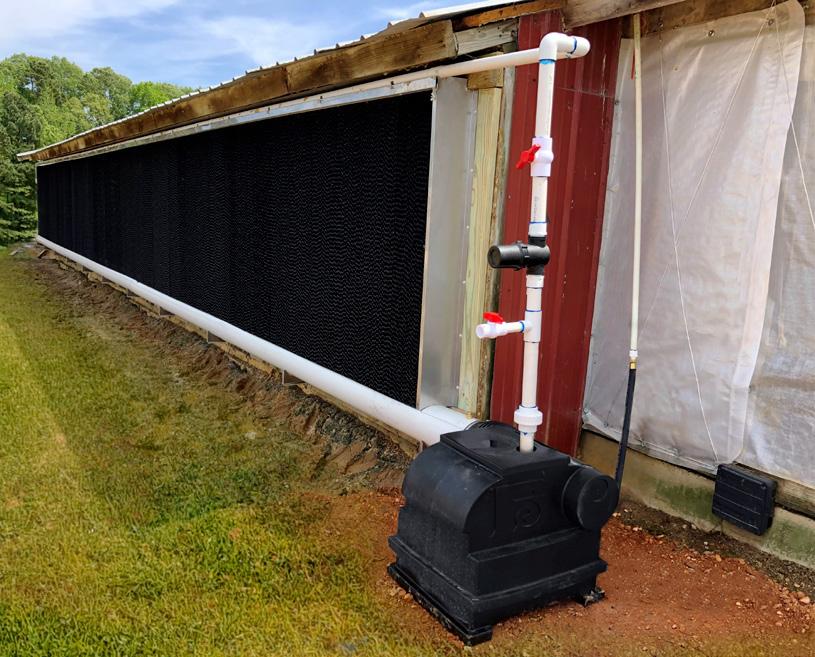
8 CB Cooling & CELdek
VX55 Munters Drive BI Inlets www.munters.com | 800.227.2376 ATLAS 74
 By: Kevin Kurbis
By: Kevin Kurbis
THE FIVE FREEDOMS
In our effort to continue the pursuit of animal welfare, we decided to enlist Kevin Kurbis to review and explain the 5 Freedoms, which has been used as a guideline for many producers around the world.
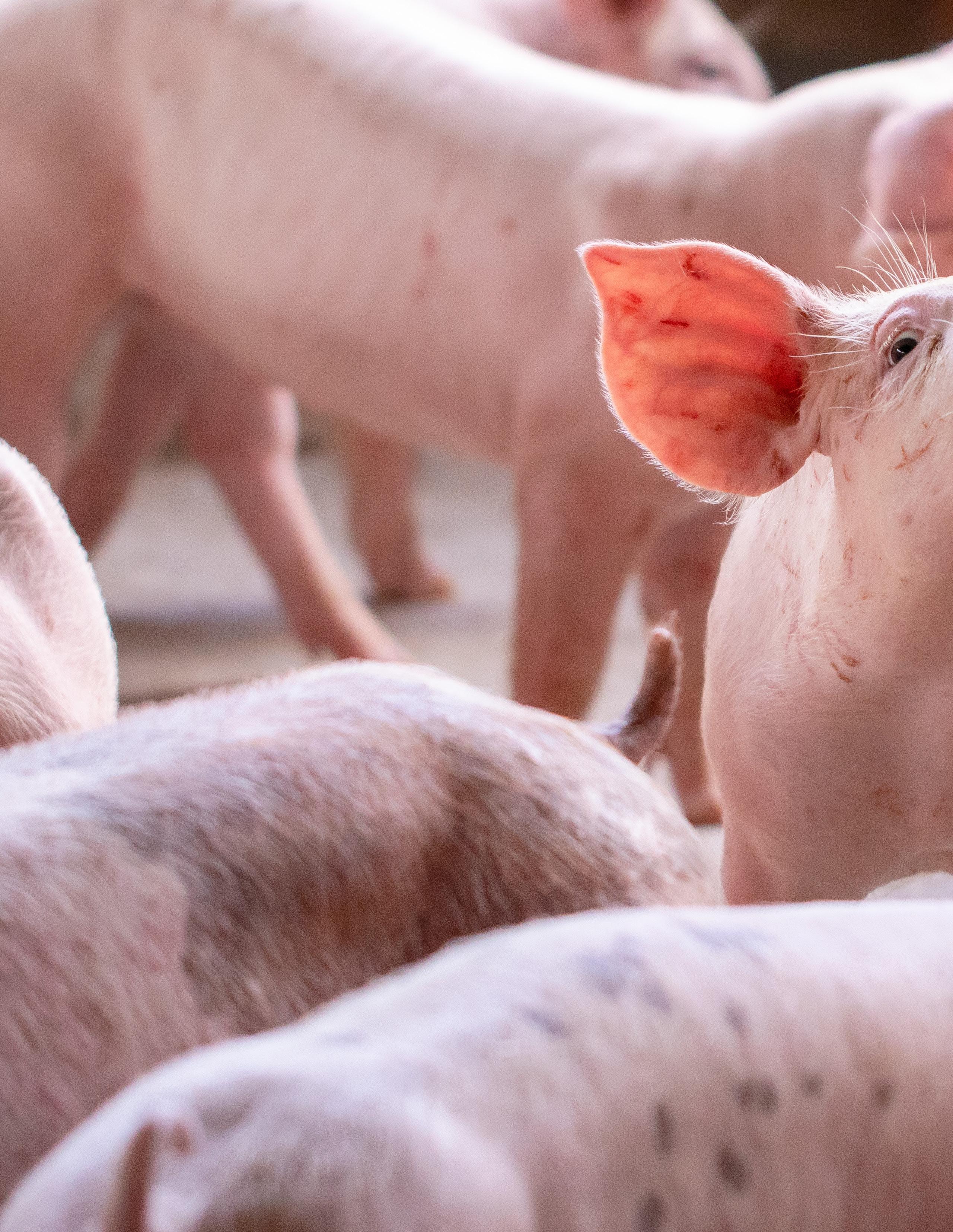
A Brief History
5 Freedoms started back when the UK government in 1965, decided there needed to be a protocol for the welfare of animals. The Farm Animal Welfare Council then tweaked these 5 freedoms in the 70’s.
The Five Freedoms
These freedoms have become a primary measuring tool, a checklist of required steps to maintain good animal welfare. We are farmers, producers, and the like; we have a responsibility to educate how we are caring for our animals. In this series, we are covering: Freedom from Hunger and Thirst, Freedom from Discomfort, Freedom from Pain and Injury, Freedom to Express Normal Behavior, Freedom from Fear and Distress.
10
1Freedom From Hunger and Thirst.
This first freedom means that the animal has access to fresh, clean water and proper dietary food. The big key piece is this statement: “Making sure they are given food and water as they require.”
How to Ensure This Requirement
New Standard prides itself on using the latest technology that ensures the best outcome for producers. They use the Nedap Electronic Sow Feeding System (ESF). Using ESF allows for a specific diet that is created specifically for that particular animal. Based on the size, need, and weight; the system allows the producer to choose what is best for the animal in terms of feed. This balance, paired with knowledge, enables your animal to maintain the appropriate weight needed and ensures a balanced diet that will keep it happy.
Handling Hurdles
ESF is also engineered to alert a producer if there isn’t feed dispensed to the animal when they are ready. It sends alerts, like an alarm system, to keep the producer aware.
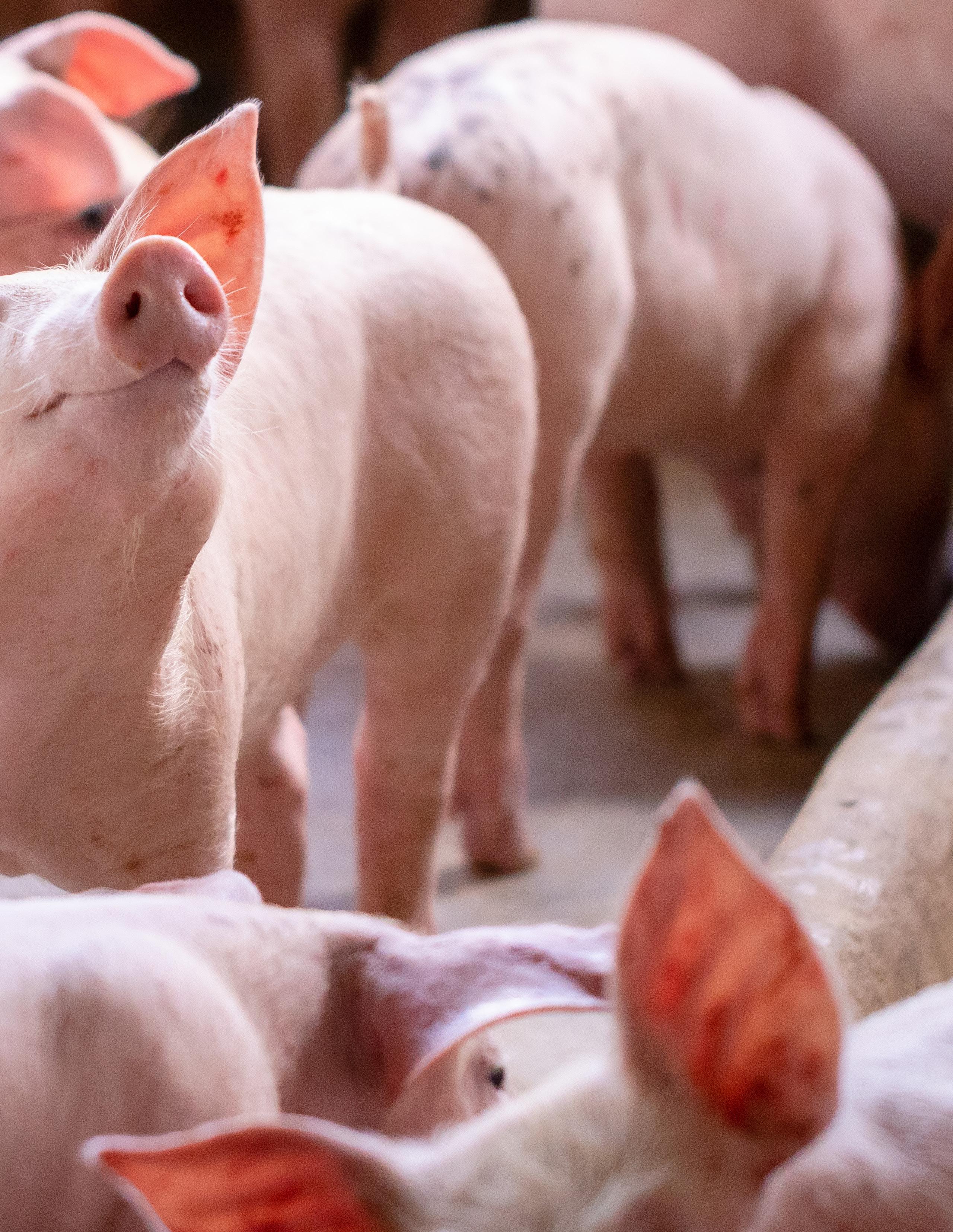
Why New Standard Trusts Nedap
The Nedap ESF is designed to disperse both feed and water at the same time. This method is a better option for the animal as it reduces the torture of eating dry food and being devoid of water. This syncing of both food and water allows your animal to feel satisfied after its feeding. Without the water and only providing dry feed at the time of eating, that First Freedom is broken. New Standard recommends at the time of new barn construction to install an ESF that allows for both feed and water.
Additional Resources of Water
It’s important to consider that your barn is equipped for the animals’ thirst. Having an ESF machine that disperses it with the feed is excellent, but when they do not need to eat, consider installing Water Nipples around the barn. Sometimes all your animal needs at the time is a refreshing drink.
Conclusion
With the help of a proper ESF machine and water stations, you are ensured on checking that box on the Five Freedom needs.
Freedom from Discomfort.
This freedom means providing an appropriate environment, shelter, and a place to rest for your animals.
Appropriate Environment
To ensure an appropriate environment for animals, one of the critical pieces is good air quality and temperature control. New Standard accomplishes these needs by using a device called the Fusion Control System. This system helps to automate: intake, exhaust, humidification, heating, and monitor other gasses. It does it all to ensure the safety of the animal.
“This is something we actually specialize in,” states Kevin. “Any style of barn, we go in and make sure it is properly vented for any animal, not just sows.”
Shelter and Place to Rest
To ensure a proper shelter and resting area, New Standard suggests constructing “laying areas” or another term “nesting areas,” especially in loose sow housing. Building low height walls that are blocked off like rooms gives the animal space while also keeping them socially engaged with other animals. Animals will lay with their backs against these walls because they are still looking for predators instinctually.
This construction allows them to see out while feeling protected and not being snuck up from behind. This safety measure will enable sows to get quality rest and mentally shut down the fight or flight response. These rooms allow for socially grouped animals to lay around or beside each other.
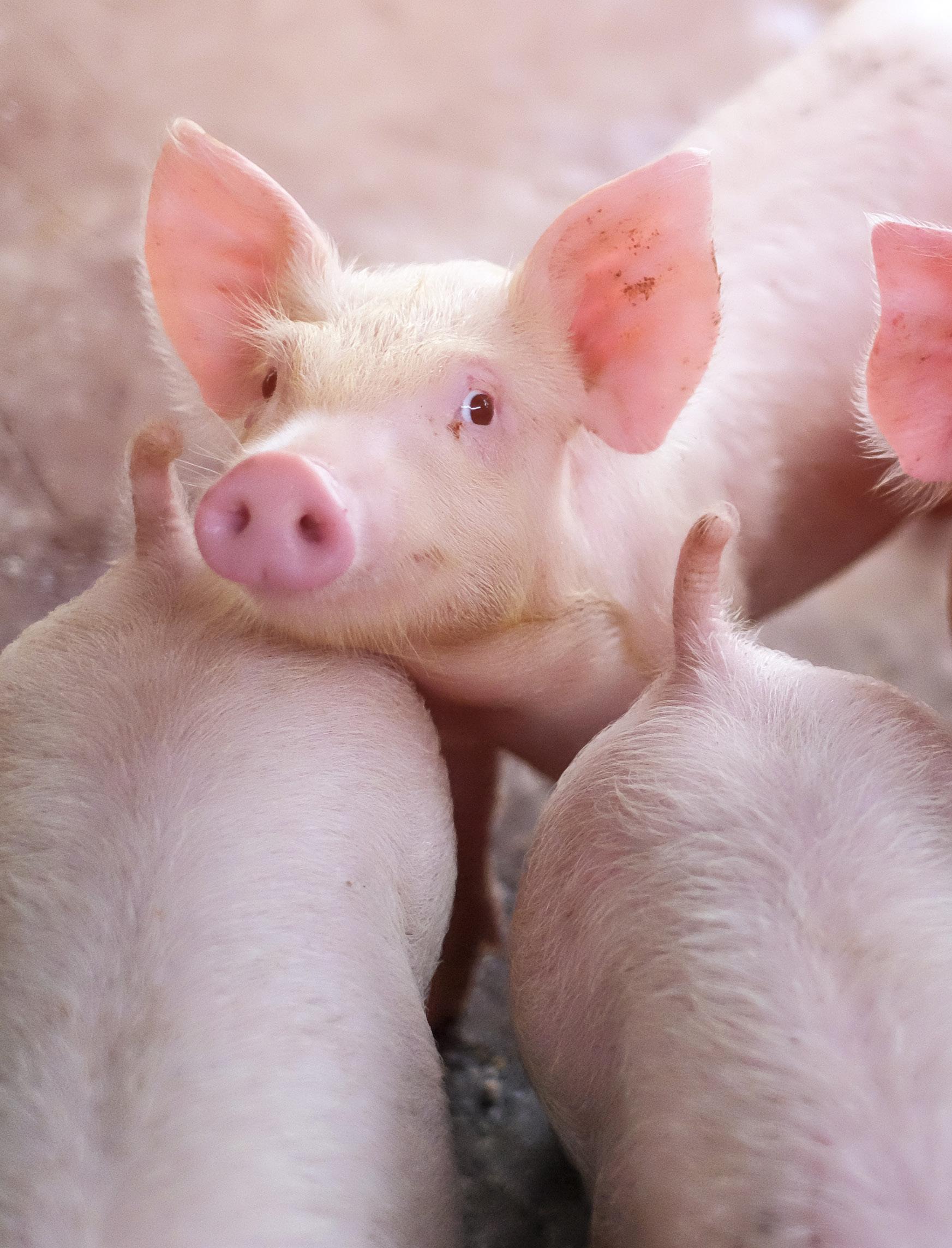
Conclusion
These key points are the ways to check off the box of Freedom from Discomfort in your barn.
Freedom from Pain, Injury, or Disease
This freedom means having prevention from injury and disease or rapid diagnosis and treatment.
Prevention
New Standard barn designs include proper flooring, slats with appropriate gaps, concrete with the correct surfacing, and nesting walls to give the sows secure resting areas. Also, having a good layout will give the sows a chance to remove themselves from aggressive animals.
Rapid Diagnosis & Treatment
New Standard relies on the technology that is available to them from Nedap in the ESF area. They have sensors that allow the producer to know whether an animal is in crisis (i.e., not feeling well, not eating correctly, etc). The machine will automatically alert the producer to these issues.
New Standard also includes a handheld device for the producer to walk around and check the animals. They can see something wrong with an animal, set a flag that notifies the next time an animal eats, they need treatment.
These options allow the producer to quarantine the animal away from the large pens and over to treatment pens. Sorting happens after feeding, where the animal walks through the exit galley. The flag from the previous will alert the separator, which will close the large pen exit and direct the animal over to the treatment pens. In most cases, within 24 hours, your animal can be treated.
Conclusion
New Standard works hard at preventing pain or injury by setting up the proper equipment and construction needed to ensure the sows well being.
2 3
Freedom to Express Normal Behavior
This freedom means providing sufficient space, proper facilities, and the company of the animal’s own kind. “This is one of my personal favorites,” states Kevin. “Actually, the majority of the team enjoys this freedom.”
New Standard studies what the animals would want to do, their behaviors, and their natural tendencies. Then we ask the question, ‘How do we make sure we get them to that as close as possible?’
New Standard believes that allowing the animal to do what comes naturally to them and working to build around those needs will result in better production and better well-being for the animal.
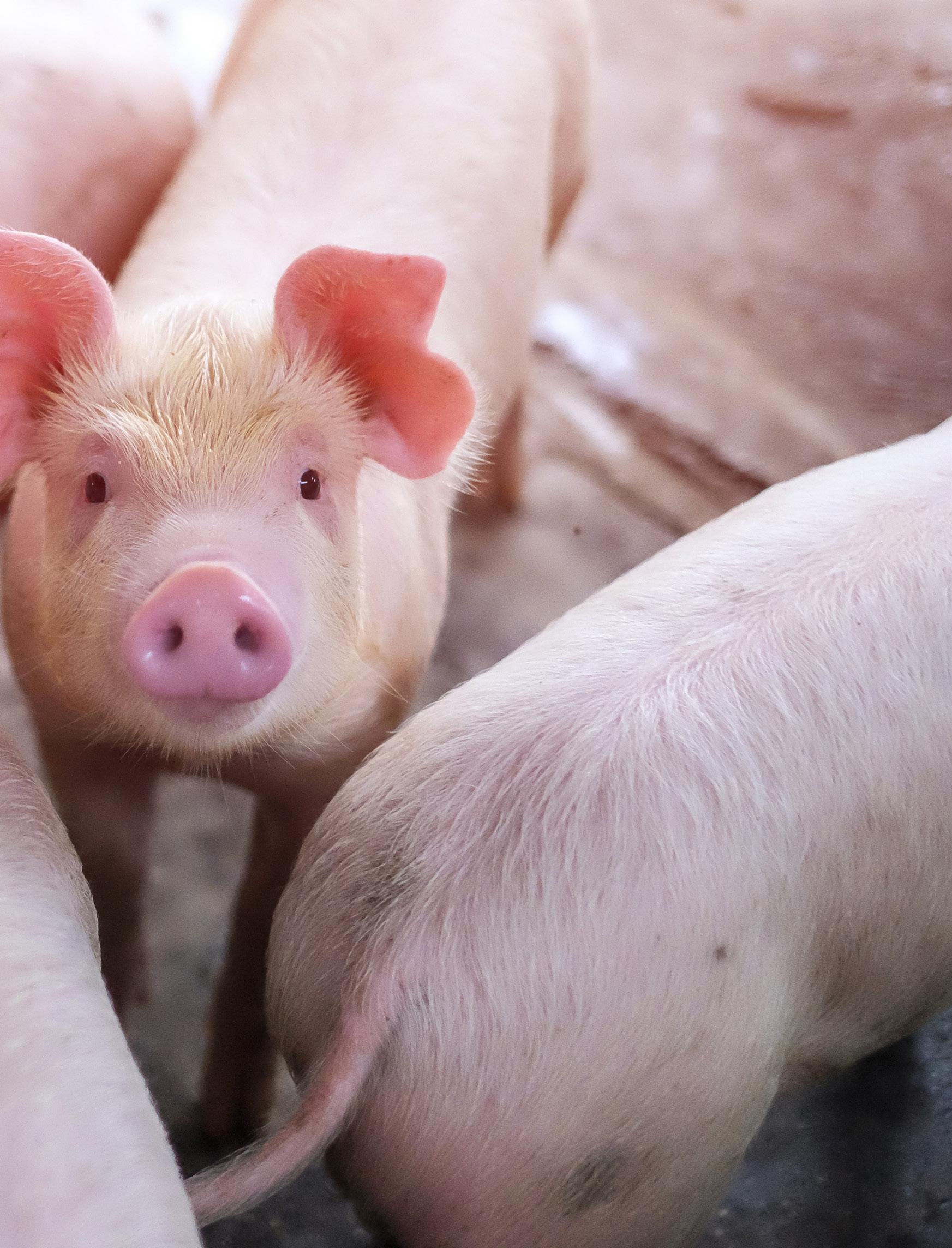
Sufficient Space
The key importance is giving different square foot allotments to the animals depending on their size. By focusing on their needs, New Standard can design spaces that accommodate for resting, roaming, and interaction.
Proper Facilities
This is done by proper air quality control and the use of the Fusion Barn Control.
Company of Animals Own Kind
Animals will run around in what is called a “sounder,” which is like making a family unit. Even in a large group of animals, they will make smaller groups of their own “sounders”. They will be comfortable with the group of their own kind, but they will congregate and often follow each other around the barn areas with smaller groups.
sound·er /•sound•r/ Nautical noun: a herd of wild swine. “he spied a sounder of pigs trotting through the garden.”
Conclusion
This is the core Freedom that New Standard focuses on to click all the boxes that an animal needs for their freedoms and wellbeing.
4
Freedom from Fear and Distress
This freedom means to ensure conditions and treatments to avoid mental suffering. The New Standard team gets this common question: “How can you tell if the animal is not mentally well?”
“Well, this is easy to tell,” states Kevin. “The New Standard team, in our loose sow buildings, can walk around without animals fussing. They are not jumpy, agitated.”
If animals are that way and are aggressive towards each other, then producers know their animal’s mental state is not well.
Nedap Systems
New Standard appreciates the design of the Nedap System ESF. It’s designed to protect them with a hallway that closes off from the sides and behind to ensure safe eating.
ESF System
This ESF system allows them to eat at their own pace without feeling rushed or fighting for food.
Forward Exit
The design of the forward exit is crucial. This allows the animal, once finished with eating, to be reacquainted with the group and pushed back into the barn system. This helps to eliminate the fighting and aggression for food within the animals.
Backward Exit
The design of having an animal back out of the feeding area goes against the nature of the animal. It creates fear and distress with the animals, and fighting and aggression can ignite. Kevin states, “Imagine eating the driest piece of bread (without the use of proper water to feed ratio), then having to back your chair up into a crowd that is trying to get in.” This analogy puts into perspective the issues with backward exits in a feeding system.
Conclusion
In New Standard’s forward exit style feeding systems, the animal can eat calmly. With the design of our barns, the animal has the freedom to do what it needs to do.
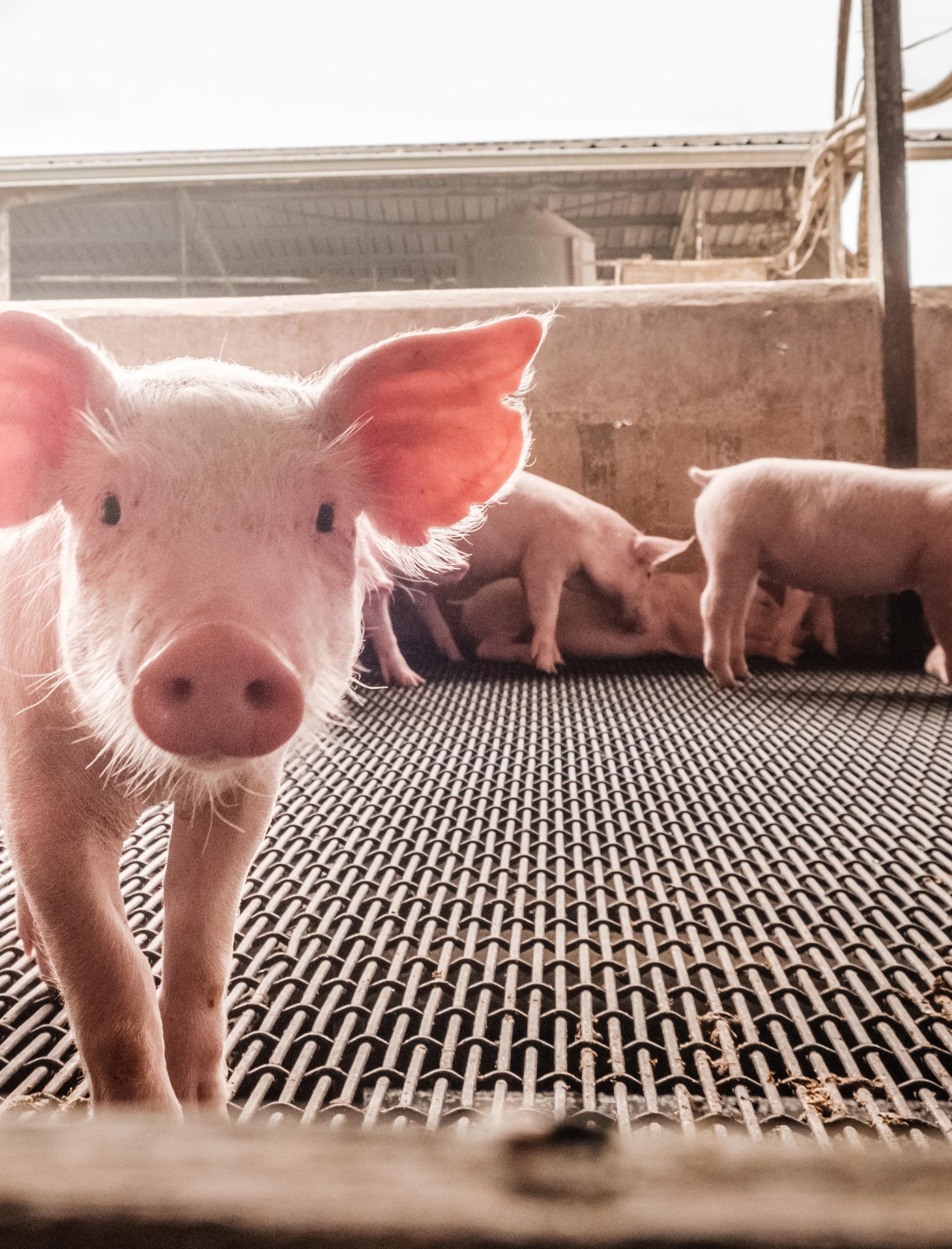
WATCH ON 14
5
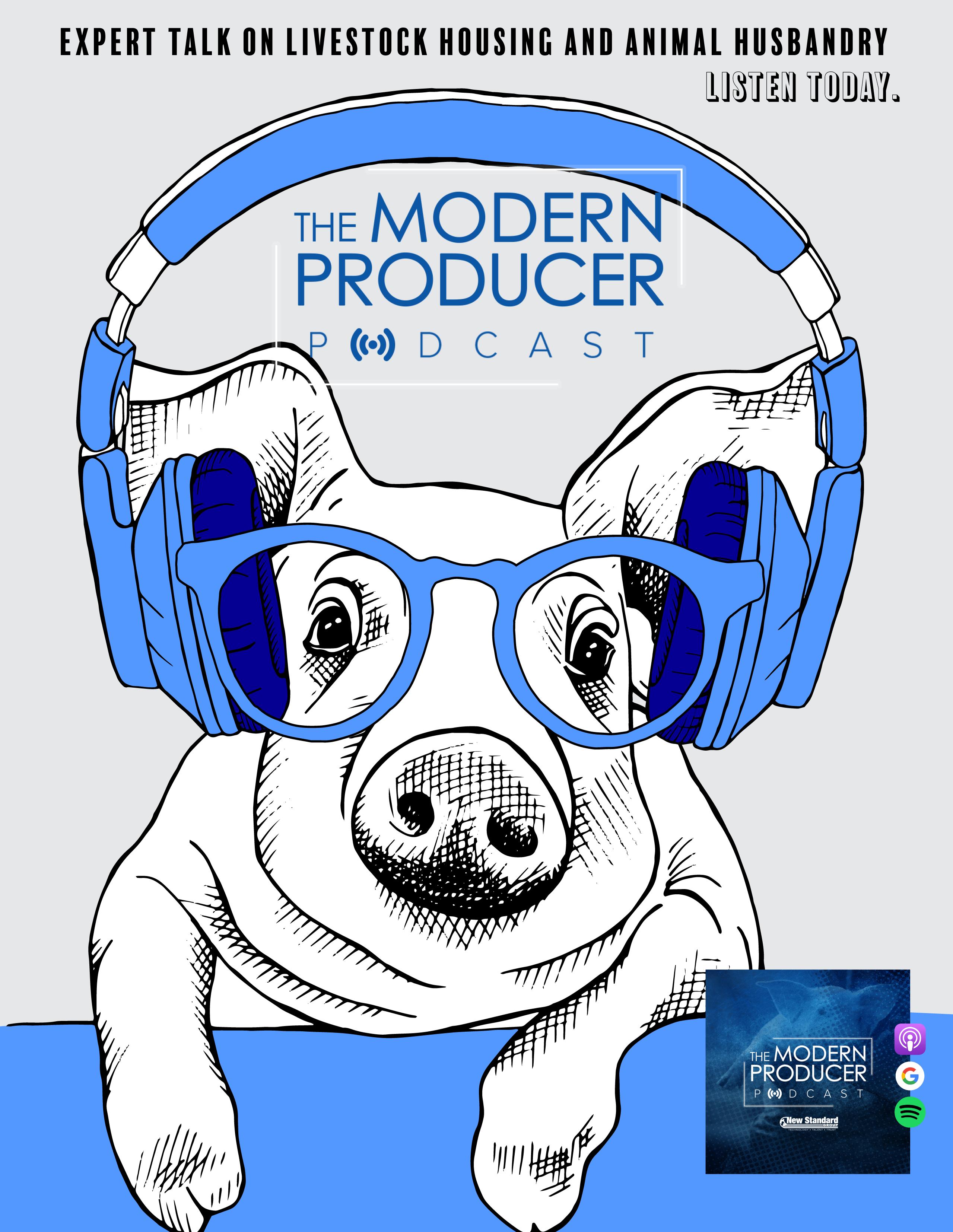
15
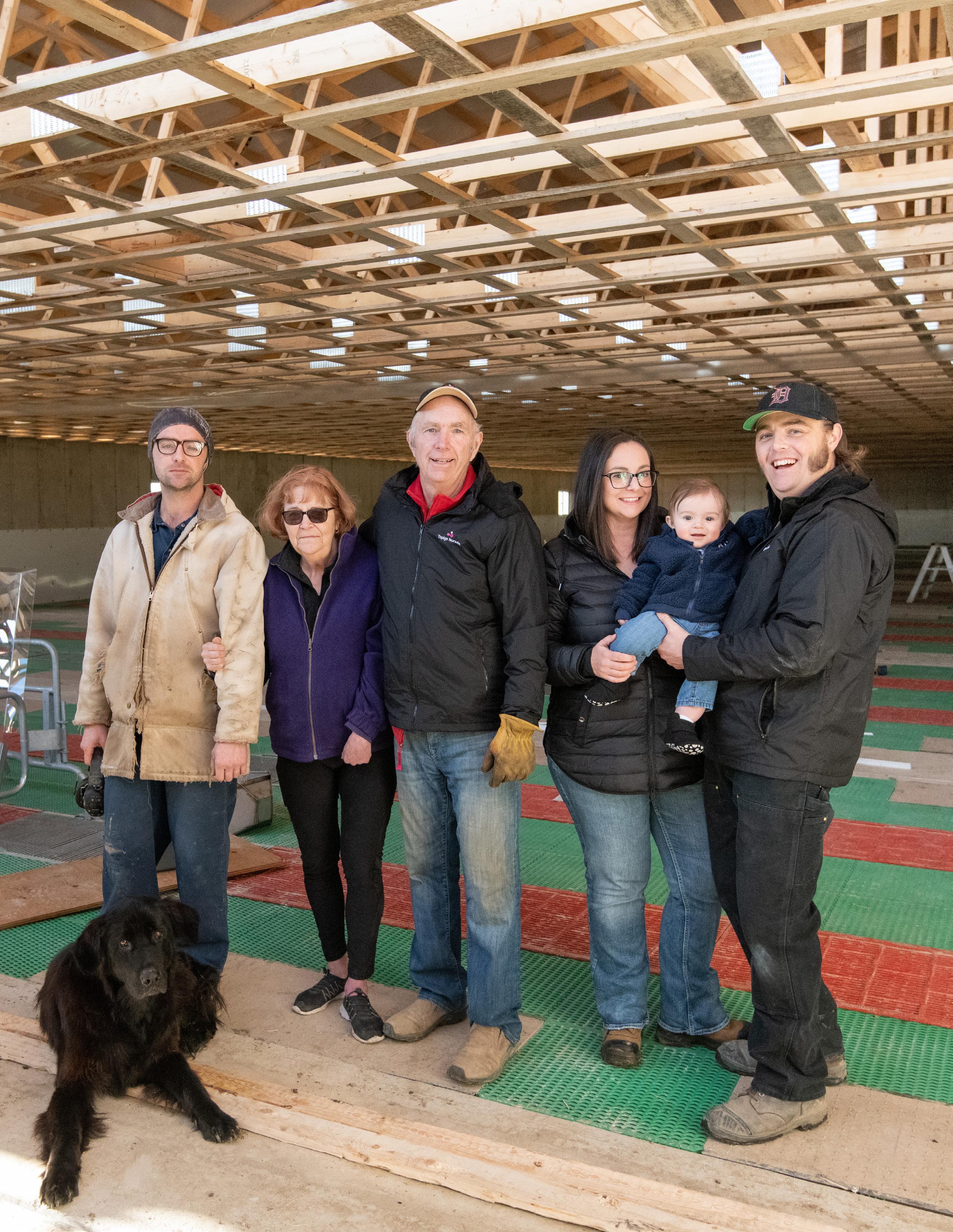
PIGEASY HELPS CANADIAN FARMER RAISE BIGGER PIGLETS FASTER SAVE TIME, FEED, AND MONEY
Success in farming is a matter of making smart choices and finding the right partners. When Darren Sloan and his family were preparing to expand their sow farm in Ontario, Canada, they spent three years assessing their options and fine-tuning plans for an updated feeding system.
That turned out to be easier, though, than finding suppliers who were willing to provide more than cookie-cutter “solutions.”
“We considered the best environment for our pigs and how we could redesign our barn to raise better piglets,” says Darren, who farms near Chatham in southwest Ontario, about an hour east of Detroit, Michigan. “Salesmen will tell you great stories that if you change your way of working, their product will fit your system. But why should I change the way I work?”
He didn’t have to compromise, thanks to a unique collaboration between the Dutch company Vereijken, which supplies swine barn equipment, and PigEasy. “We like Vereijken and are glad they were willing to team up with PigEasy, since they offer a feed system we really wanted to work with,” Darren says.
The challenge
The Sloan family’s renovation plans took shape a few years ago after Darren returned home to farm full-time after working in construction for seven years.
“Our original barn was built in 1994, but our facilities were getting worn out and needed to be replaced,” says Darren, a fourth-generation farmer who raises early-wean pigs.
The Sloans decided to expand their 550-head sow operation to a 1,100-head sow farm. They also wanted to switch from feeding by hand to an automated system. “Hand feeding was so time consuming,” says Darren, whose family includes his wife, Vanessa, and their son, Grayson, who is almost 2 years old. “It took me an hour and a half each morning just to feed the sows.”
As the Sloans developed a renovation plan, Darren thought back to his construction career, which taught him the importance of customizing projects to the owners’ unique needs.
“No two pig farms are the same. How do you decide on the size of the crates? How do you decide on the size of the
corridors? There are so many things to think about that can ease your daily work. It’s important to make choices that fit your management style.”
Darren and his father, Lyle, thoroughly analyzed their current system to determine what worked well and what could be improved. “We are owner-operators and were willing to put a lot of time and effort into redesigning our barn,” Darren says.
They also spoke with lots of fellow pig farmers and ag suppliers to get a broader perspective. “This really helped us to make a renovation plan that works for us and also meets current sow housing requirements,” says Darren, who serves on the South Western Ontario Pork Conference board.
Unfortunately, it wasn’t easy to find a supplier that shared the Sloan family’s enthusiasm for this customized plan. “We got pushback from companies that sold barn designs,” Darren says. “Some said, ‘You don’t want to spend your money on that system,’ even when we did want to spend our money there. Those companies were more interested in selling us their idea than helping us reach our goals.”
The solution
The Sloans didn’t give up. When they attended the Ontario Pork Congress and trade show a few years ago, they started connecting with companies that were willing to help them reach their goals.
“At the 2018 show, we walked by a booth where we saw a cool-looking doohickey that metered out feed to the sow,” Darren says.
That turned out to be PigEasy’s MealMeter, an ad-lib feeder that gives sows the power to decide when they want smaller portions. This design allows sows to access fresh feed anytime they want, plus it reduces feed waste. “Even though PigEasy’s system seemed very simple and effective, I figured
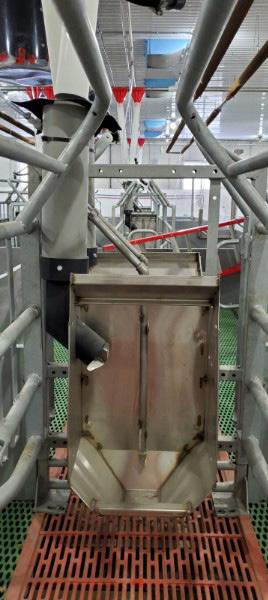
17
sows would just play with the MealMeter,” Darren says.
About a year after the Sloans first saw the MealMeter, they asked PigEasy to send them some equipment to try. They retrofitted two sow crates with the PigEasy feeding system and were impressed from the start. “The sows didn’t play with the MealMeter or dump feed into the manure pit,” Darren says. “We knew this was something we wanted to incorporate into the 192 farrowing crates we were planning for our farm.”
The Sloans explained this to Vereijken, the company in the Netherlands that was supplying some of the equipment for their expanded swine barn.
“Vereijken’s engineering department worked with PigEasy to see how they could make their products fit,” Darren says. “Instead of telling me we’d have to change things to fit their products, these companies saw our vision and considered what works best for our business and the way we manage things.”
The results
The MealMeter feeding system has allowed the Sloans to eliminate hand feeding and provide sows with easier access to the nutrition they need.

“While we fed 3.5 to 4 kilograms (7.7 to 8.8 pounds) per sow each morning and afternoon when we were hand feeding in the old barn, we can put 6 kilograms (13.2 pounds) of feed in the hopper with the MealMeter,” Darren says. “Our sows in the farrowing rooms now eat as much fresh feed as they want, when they want.”

Some lactating sows eat 24 to 30 pounds of feed a day with the MealMeter, with little to no feed waste. “We want our sows to have as much feed as they need,” Darren says.
That’s especially beneficial in the summer. “When I was hand feeding on hot, humid days, the sows didn’t want to eat right then, but I didn’t want to come back to the barn and feed them at 10 p.m.,” Darren says. “I don’t have to worry about that anymore.”
All this contributes to greater animal well-being, which helps the Sloans produce bigger piglets more efficiently yearround. While the family had been raising pigs in the 6- to 6.5-kilogram (12.2 to 14.3 pound) range within 19 to 21 days of birth in the old system, piglets are now reaching 15 to 17.5 pounds in the same amount of time. “When Mom eats better, her piglets grow bigger and healthier, which is our goal,” Darren says.
Darren also appreciates that PigEasy is owned and operated by people who raise pigs and understand farmers’ challenges and needs. “They aren’t just salespeople. Their own farm experience speaks volumes.”
This support is a big plus for the Sloan’s family farm, which is twice the size it was just a few years ago. “Pig farming is definitely not easy, but I like the challenge,” Darren says. “If you don’t find the right partners to help you reach your goals, keep looking. Companies like PigEasy will work with you and provide the solutions you want.”
18
THE PIGEASY SYSTEM IN LACTATION captures the intelligence and instinct of the sow to make the feeder work for them. With its unique wet/dry design, the sow cleans up dispensed feed with every drink. The MealMeter’s intuitive rotating movement enables the sow to use and consume feed at her own preferred pace.
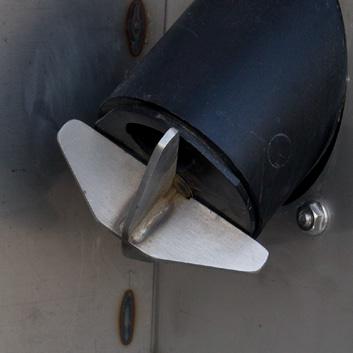


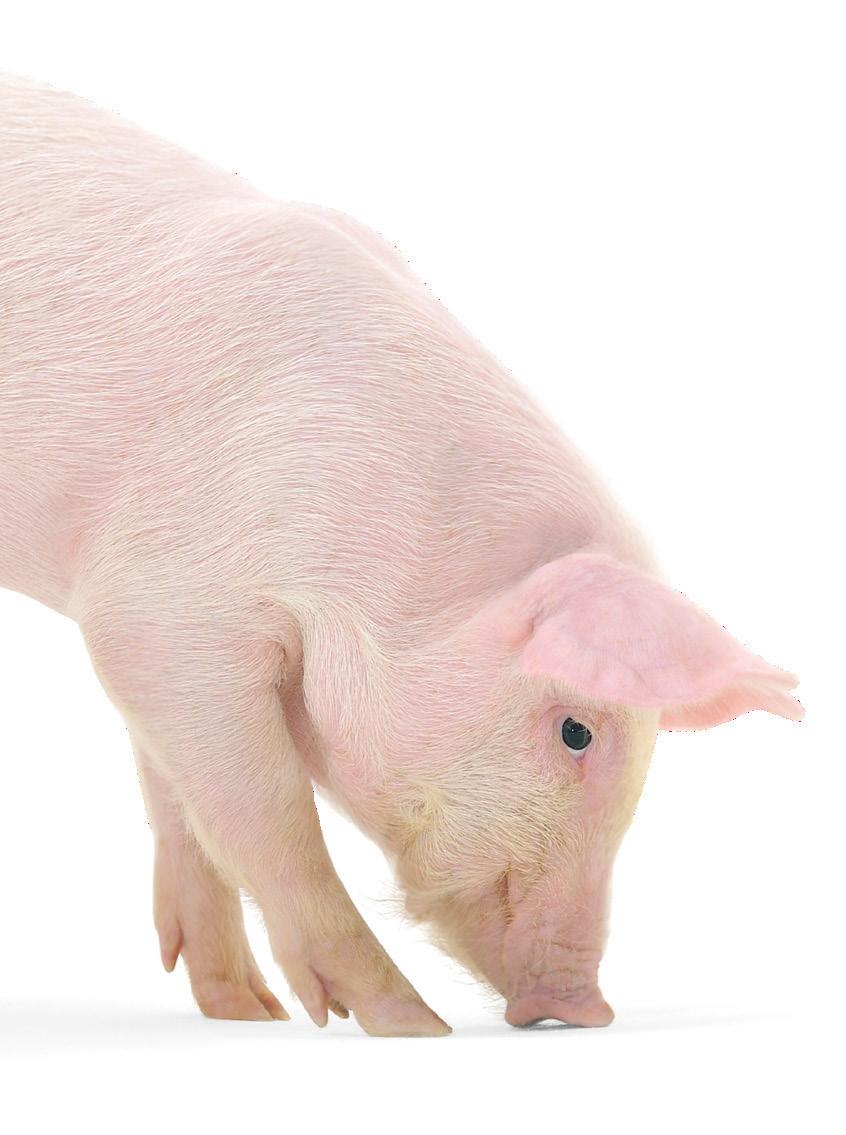

Boost your operation’s potential!
Scan for PigEasy.com
Because easy is better.
FROM THE PODCAST
In the first full episode of season two, we welcomed Britt Roman to the show. Britt is best known as the area rep for Munters, but he also represents other manufacturers through Ag Environmental Resources, LLC. Munters is out of Lansing, Michigan, and focuses mainly on dairy, swine, poultry, and greenhouses solutions.

Britt is a central Texas native and has lots of experience in the industry. This show was full of excellent insight and discussion. We hope you enjoy it!
To learn more about Munters, visit Munters.com. For more info on Ag Environmental Resources, Agvent.net
Scan To Listen!

· Templeton, IA 51463 · 888.354.0112 · PigEasy.com
SOW FEEDER Eliminates feed build up. MEALMETER Optimizes feed intake. 21-0132
TM
Season 2 Episode 2
Britt Roman Munters
ESF REMODEL AT: A&A VAN GINKEL FARMS
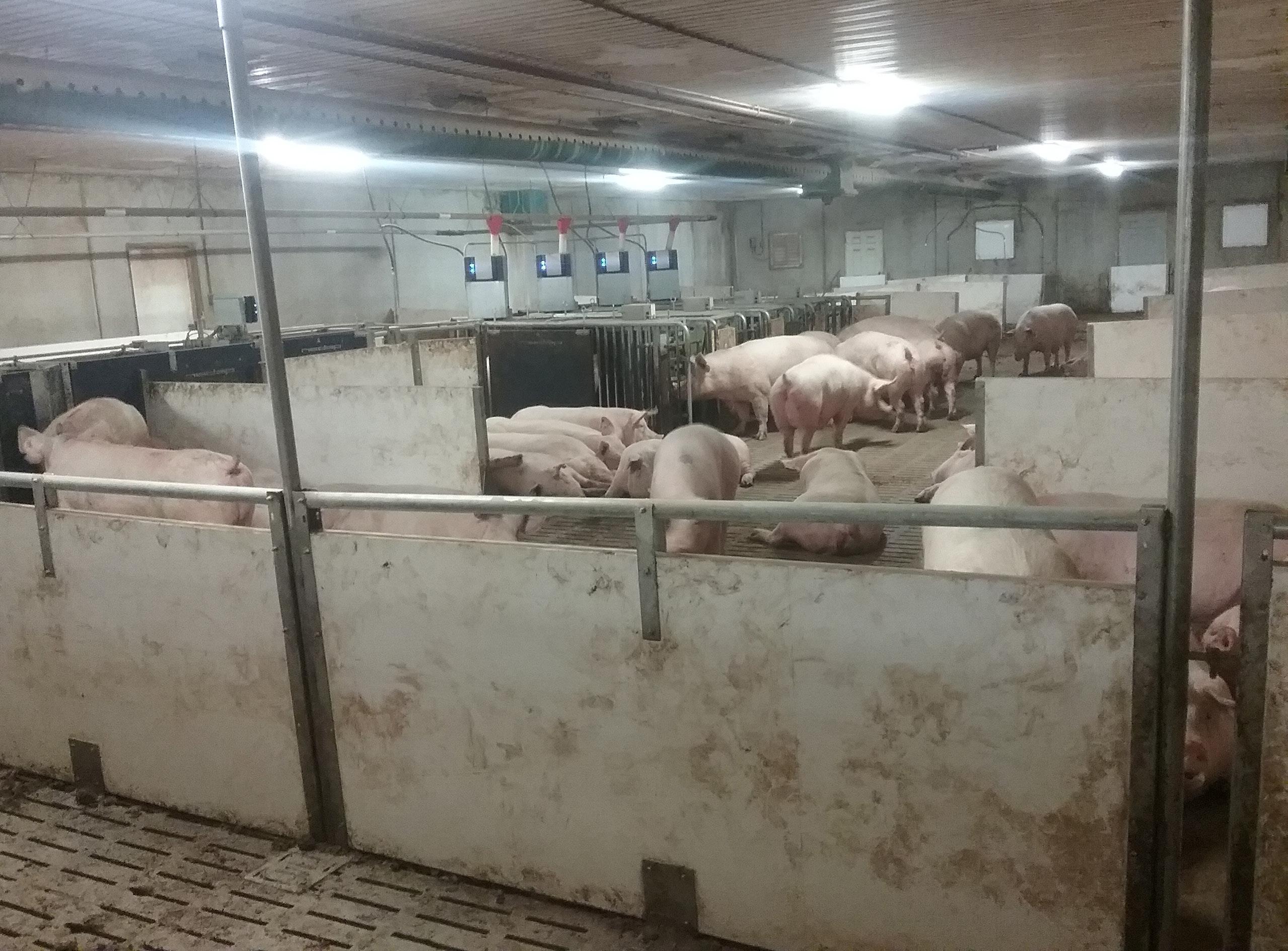
One of the main deciding reasons we decided to go with New Standard West as our equipment supplier, was the knowledge and experience that Kase van Ittersum has. He was able to suggest parts that would work as a complete system. The suggestions that he made, once implemented, have
worked very well over the years. New Standard supported and trained us in the installation and use of all the systems.
Working with New Standard West and Kase van Ittersum is an exceptionally good experience. New Standard is truly knowledgeable in the product
they provided and are quick to respond to any questions or concerns we have. The systems are working as promised and we would not hesitate to recommend New Standard
all
in barn needs.
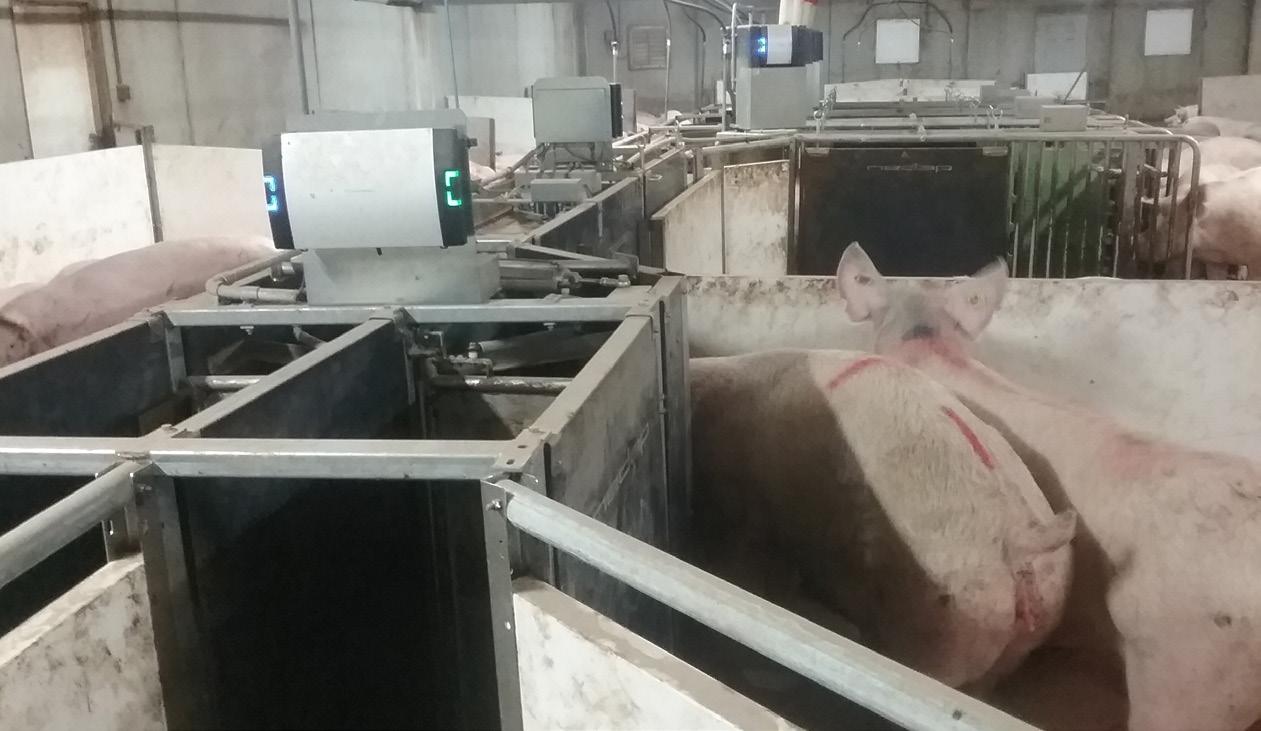
20
for
your
“New Standard is truly knowledgeable in the product they provided and are quick to respond to any questions or concerns we have.”
-A&A Van Ginkel Farms
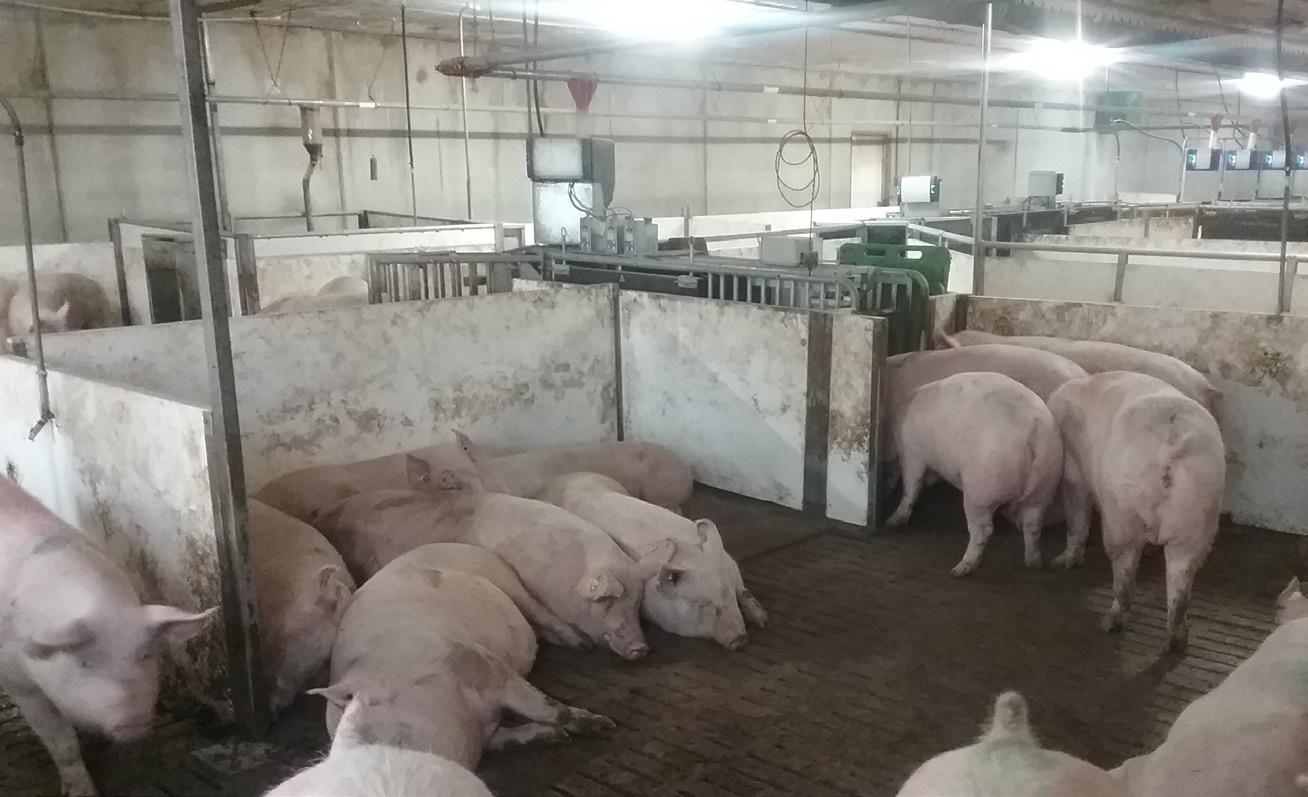

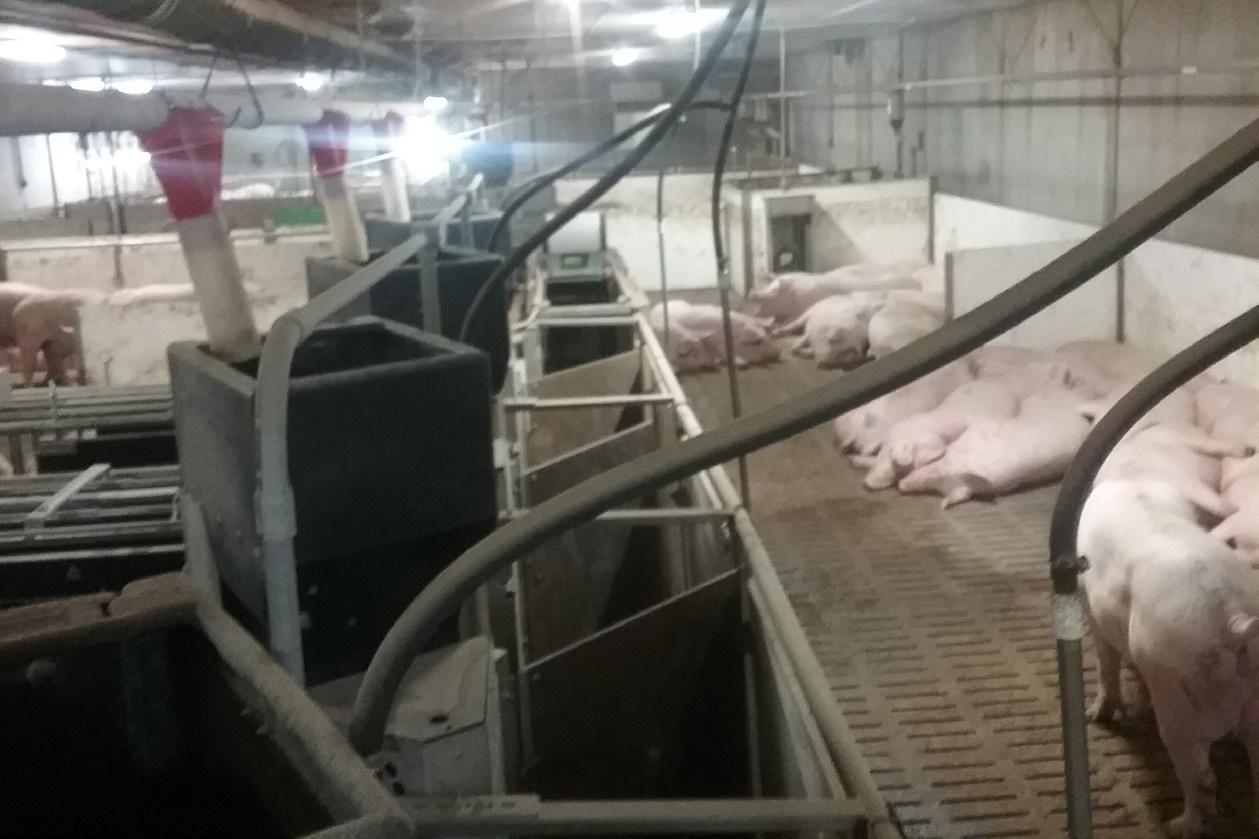


Where? Leslieville, Alberta, Canada What? 300 Sow Farrow to Finish with ESF barn When? Renovated Sow barn from Stalls to ESF initial plans Feb 2018 Equipment Installed & Supplied by New Standard Group PanelTim Panels S.S. Penning Posts EMI Fans Microfan Ventilation Chain Disk Feeding Nedap ESF • 1 Group with self training gates in gilt development area. • 1 Group with 38 gilts with 1 Nedap Feed station and heat detection • 1 Group with 160 Gestation Sows, 4- Nedap Stations, 1- Sow Weighing, 1-Sow Separation and Heat detection. OVERVIEW
WHY CO2 SENSORS?

Over the course of the last three years or so, the team at New Standard has started to incorporate a new facet of ventilation regulation (and modification). Almost every single poultry house that we’ve installed controllers in, now has a CO2 sensor installed and wired to the control. Below, I’ll discuss why this transition is happening and how it may apply to your site.
History
It may be helpful to understand the history of ventilation regulation beyond just temperature. In the past, RH (relative humidity) has been the primary modifier that was used to change ventilation levels beyond temperature rise. For instance, if the temperature in the barn rose, the ventilation typically would rise also. If the RH increased past a certain point, then the ventilation would also rise to lower the RH. In some houses where the birds are younger, the set point for the heat may have been raised with increasing RH to cause extra ventilation from temperature rise and dry the barn that way. Providing that the heat source could keep up with the added air exchange, the barn would be able to lower the RH quickly. This approach worked well but there was still an inherent lag time to change the quality of the air as it took a bit of time to respond and then some more time to get the humidity levels to drop.
Regulation on CO2
With the advent of more robust sensors and control programming that could better use additional parameters, New Standard started to install CO2 sensors about 2017 and use that feedback to regulate air exchange. What we have found is that the air quality is much easier to keep consistent and the response time is far better as we don’t need to first dry out a barn. For the most part, if a barn is being well controlled for CO2, humidity never has a chance to become a problem.
By Tim Kurbis
Obviously, this isn’t perfectly true but when CO2 is regulated, then everything is in a better place.
How we do it
When we set up a new site or a control change, we begin with an understanding of how we want the ventilation to flow or how it currently flows. This, in combination with understanding bird movement will help us place a sensor well. Ambient or atmospheric CO2 is also a good thing to know when setting things up. In South Dakota for example, the ambient CO2 levels range from ~325ppm (parts per million) to 500ppm. Elevation and time of year will be the primary reasons the numbers shift a bit. We use this as a base of what is desired and then start to increase ventilation levels based on that.
To answer an obvious question that may arise (why not measure and regulate on oxygen?), the answer is rather simple. Oxygen sensors are more expensive and require more maintenance which makes them less attractive. By measuring the inverse (dropping oxygen will mean rising CO2), we can stay efficient for expenses and upkeep.
There are other questions that arise and things that are good to know. For example, what levels above ambient are considered acceptable, how do birds experience CO2 in a barn setting, and what do I do if I feel the levels are too high?
Let’s start with what is considered acceptable. Acceptable may be a misnomer as that doesn’t always mean the same as “safe”. For instance, concentrations above 1,000ppm will already lead to complaints of drowsiness, concentrations above 2,000ppm can induce headaches, poor concentration and elevated heart rates, and concentrations above 5,000ppm will put you in a place where workplace safety must be addressed. All these
22
CO2 Sensor By dol sensors
levels are safe in the sense that they won’t harm you immediately or directly, but should they really be considered acceptable? I would argue that for the purpose of maintaining a healthy environment, we should target CO2 concentrations below 2,000ppm. This may not always be possible, but we should strive for that goal.
Birds do have a higher tolerance for hypoxia (lowered blood/ oxygen levels) as they are still designed to exist at altitudes that humans don’t naturally travel. That doesn’t mean it doesn’t affect them; it just means they can tolerate it better. It is still advised to maintain a level of CO2 that is preferred for humans knowing it will be beneficial to the birds as well.
Now, if the levels do start to rise, we’ll program the control to respond accordingly. Typically, we’ll start increasing ventilation levels once the ppm gets above 750. As barn sizes are all different, the level of increase for airflow will have to fit that


barn. We would need to understand what is possible for increased ventilation without cooling the barn below the set point and then set the upper limits of correction to be reached by the time we hit 2,500ppm. In most cases, I recommend an aggressive approach by the time we reach 2,000ppm.
This may be a new topic for some, and to others, they’ll freely attest to the benefits. Danny Waldner (turkey manager, Platte Colony) just relayed to me personally this week that the ability to control his air quality is far better now that he can monitor and regulate CO2. Of course, we’d like to think he also benefits greatly because we’ve installed a new Fusion controller for him a couple months ago. :D
If you’re in need of a better understanding or if you want to look at what can be done to make your site better, give us a call; we’d love to give you the same story Danny has.
23
www.nooyenpigflooring.com Highest level of comfort, welfare and hygiene 3 lbs higher weaning weight 50% less severe joint damage Every piglet deserves to be born and raised on a soft, warm and clean Nooyen Super Coated slat.
COLONY HIGHLIGHT
PLATTE COLONY
PLATTE, SOUTH DAKOTA
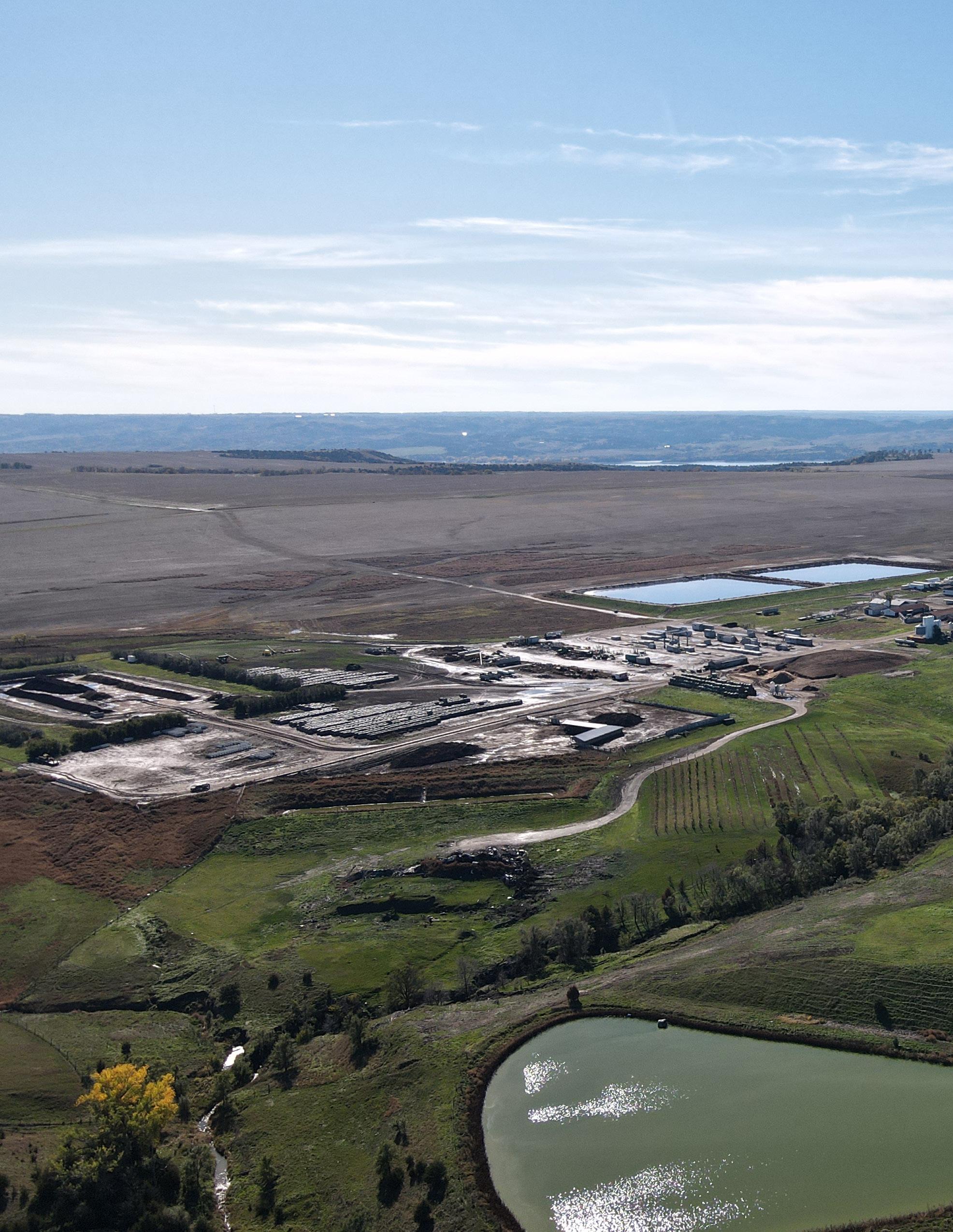
On a late Fall day, New Standard’s Ben Cochran and marketing staff, Jake Peterson and Celene Olson, were invited to Platte Colony in central South Dakota, about two hours west of Sioux Falls. The opportunity? To learn what the day in the life of a Hutterite looks like. New Standard has had the pleasure of working with many colonies around the US and Canada, and we wanted to highlight the way of the Hutterites.
The plan for our visit included a noon meal, a tour, and some great conversations. Upon our arrival, we sat down with our host Danny and started our chat. The rest of this article shares our questions, answers, and some beautiful insights into the Platte Hutterite Colony. We hope you enjoy reading this half as much as we enjoyed our visit.
Danny was incredibly welcoming and transparent, and nothing was off base or taboo to ask; he encouraged us to ask anything we had on our minds.

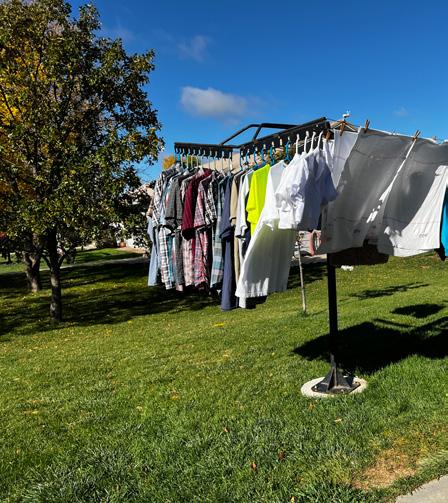
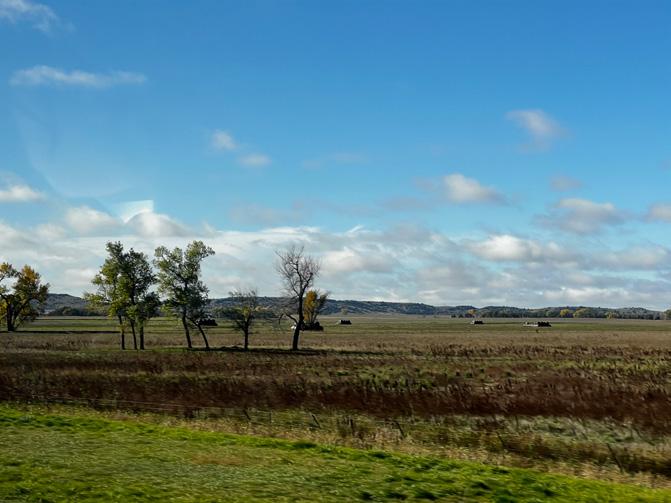

HISTORY OVERVIEW & FAITH
What is a Hutterite?
Hutterites are a self-sufficient community, hard-working, industrious, and deeply religious. The Hutterites started in Europe. The primary reason the Hutterites began was a disagreement about infant baptism in the Church. Instead, they believed that once someone was a believer (Christian), they could be baptized as a Christian. Some other differences that set the Hutterites apart are they practicing pacifists who don’t believe in fighting or arming themselves for protection.
When was Platte Colony founded?
Platte Colony was founded in 1949 after a split from another colony. Typically colonies split or start new homesteads once size becomes a factor and the finances allow it to sustain itself. Thus, Platte was one of the first established colonies in the Dakota’s.
Tell us more about Baptism.
We believe in a believer’s Baptism. Someone has to understand their Christian faith to get baptized. A believer’s Baptism shows a commitment to the Christian faith and also to the community.
What is a Church like in a Hutterite Colony?
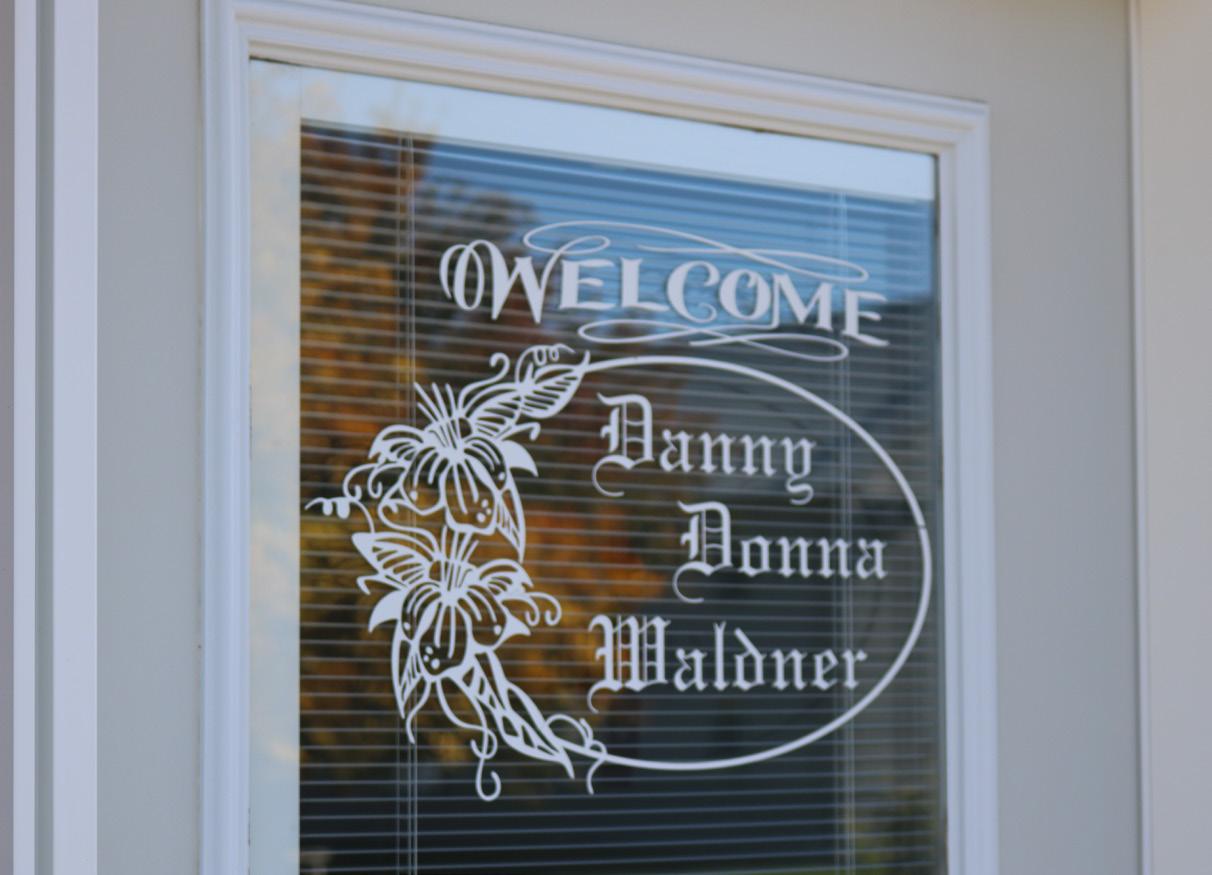
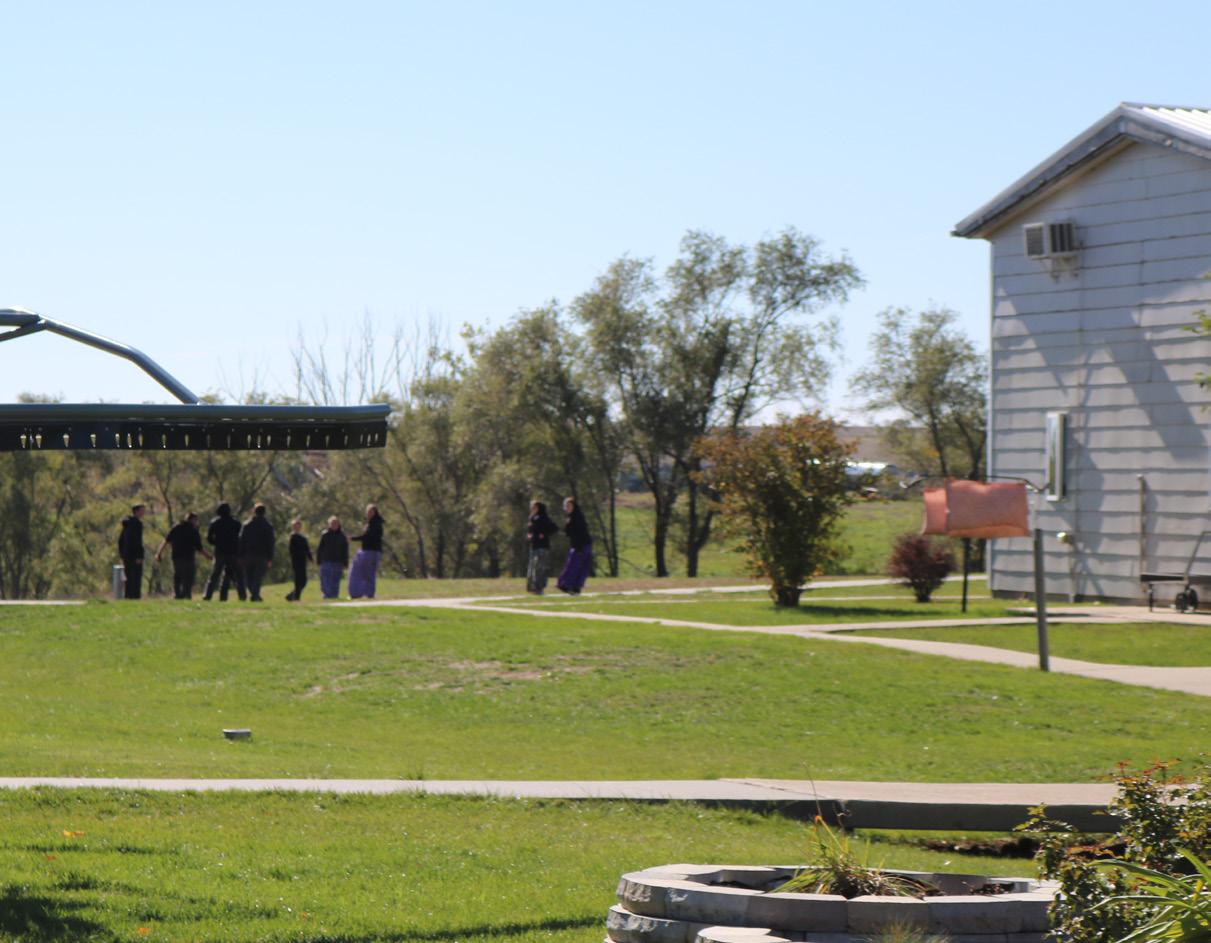
We have Church every day. We gather at 6 pm with singing, prayer, and a message from the preacher. On Sundays, we have Church two times, for about an hour and a half. The kids have Sunday school after the service to help them understand the bible verses and message. The kids learn to memorize bible verses and are building foundations for faith.
COLONY ROLES & FINANCES
Does the Colony offer jobs/careers?
Men do not get to choose what they do as a career; instead, jobs are decided by the Leaders, who place a man where he will hopefully fit best. When a job is given, men are expected to accept the position.
When men start a new role or job, they have many supporters to help train and encourage them to get a good start. However, if they genuinely cannot complete the job’s tasks or the stress is too much, they can resign and be given a new role elsewhere in the Colony.
If a manager or boss position is available, Leaders and married Baptized brothers will vote on the man for the leadership role.
Women’s Roles in the Colony
Women in the Colony have many roles. The women take on all the food prep, from baking to meal prep to serving and cleaning up. Women also tend to the vegetable garden; Platte has a greenhouse for fresh veggies year-round.
Industries at Platte Include:
Beef Pigs
Layers (chickens)
Grains (corn, soybeans, and more)
Poultry: Ducks, geese, turkeys
Precast Concrete Welding Shop
Mechanical Work Garden/ Produce (mostly for internal use)
26
Danny & Donna’s Welcoming Door & Teenagers Play A Game of Football
What about the kids?
Kids from 3-5 years old have daycare from the beginning of May until the end of September. The German school teacher keeps the boys busy with learning how to do chores around the community after school hours.
Kids also work in the garden and help out where they can. Kids are taught from a young age how to work the farm and contribute to the Colony.
Once kids are 15, they have a graduation ceremony and can get a job within the Colony. Teens that wish to continue their education in high school can attend.

How does a Minister’s role work?
Ministers provide spiritual care and guidance for the Colony. Ministers are chosen by the following process:
1. The colony leaders vote to narrow down candidates; they must receive two votes from leaders to become a candidate.
2. All the baptized, married men cast votes; a total of four votes must be received in order to proceed.
3. The candidates’ names are placed into a hat. We pray over the names and put the decision in God’s hands.
The drawn candidate becomes the minister for the Colony. Many of the ministers take the role of a German school teacher. Some also have jobs within the community.
How is the Colony Guided?
There is a group of leader/elders that oversee Colony rules and guidelines. Leaders/Elders meet annually to discuss changes and policy. These guidelines are in place to help people live the best Christian life they can. Minor rules and regulations are decided and managed within each Colony.

If more significant issues require outside law enforcement, we will get the law involved, although that rarely happens.
“We don’t believe in judging. We forgive, and help others find the right path again, we believe in showing the right kind of love, the love that Jesus taught us.”
Top to Bottom:
Main kitchen, well organized for efficient food prep. Cold storage with lots of delicious, home-grown canned goods. Main Dining room, ready for the next meal German classroom for children

Main

Left to Right: Three large turkey barns holding around 18,000 birds each. Baby turkeys or poults are getting acclimated. Grain elevators filled this year’s harvest.



How do finances work?
There are no salaries or wages for jobs in the Colony. All money is funneled into the colony account. Individuals do receive a stipend of three dollars a month, which can go towards anything extra. When larger purchases are needed, we usually have to go to the Elders for approval over a certain amount; for instance, our barn needs an equipment upgrade or something more costly. However, that varies from Colony to Colony.
What if an individual needs something else?
If we need anything, we can request that from the colony secretary. For instance, you need a new pair of boots, an oven, or home supplies; it will be provided based on the displayed need. It is genuinely communal living, and everyone has just what they need.
COLONY LIVING & CULTURE
Did you choose Colony life?
At a certain time in our lives, we understand why we love the colony life. “You develop wisdom over time,” states Danny Waldner. “Younger generations, it is tough for them. But, once they understand and grasp the afterlife and read the right book (Bible), they will appreciate the colony life.”
What about your clothing?
Once upon a time, some wore blue jeans and belts, but the glitz and glam of the clothing began to bring too much attention to the individuals. Preachers got together and decided that things were getting too flashy. So we switched to black pants and suspenders
since they were less flashy. We try not to adopt the worldly way of living.
Undergarments, shirts, skirts, and dresses are handmade. Pant styles can vary from Colony to Colony. Either they will make their own pants, or they will buy the pants. Everything is muted in color as we have faith and Christian faith, not by appearance but by how we live. We want to show the right kind of love and living without outside influence.
Healthcare?
We typically have someone in the Colony that can help with health issues. For example, we have a man that has experience as a chiropractor. Otherwise, we will go into town or a hospital to seek help as needed.
Births and Birthdays. Are there celebrations for those?
For births, there is no formal celebration besides congratulations. There are no baby showers or things like that. As for birthdays, it depends on the family how they want to celebrate those. We have done celebrations at five and then at 15, but some families choose to celebrate every year.
Marriage?
We host social events and gatherings for our Colony with other Colonies. Our people get to choose who they want to date and marry on their own. There is no arranged marriage.
There are strict guidelines in regards to dating premarriage. Physical relations are strictly forbidden. If it
28
View of the cattle pens and fields. Platte Colony Concrete facility, just one of the many industries on the Colony.


does happen, they either have to marry each other; or if they don’t want to marry, they will not be allowed to marry anyone.
Retirement?
Colony members can retire if they want to; however, most want to work as long as possible.
What about death?
When someone dies, we have a wake at the Church. We sing songs, pray and have a sermon. Between the wake and burial, we go to the home and visit with the family. The family has private time to say goodbye before the funeral. Lastly, the deceased is laid to rest in the cemetery on the colony grounds.
Technology?
We use the best technology we can afford. It comes down to doing our jobs well and efficiently, we utilize the latest tech available. From our tractors and grain facilities to hog and turkey barn automation systems, we work hard to stay up-to-date.

Men in the Colony have smartphones and do utilize apps, but mostly text and call. We can use apps if it’s for business, but we need to get approval first. If a woman needs a cell phone, the men will often share it; otherwise, most women use wall phones to communicate within the Colony.
What does one do for fun?
Often younger ladies and men will go on trips and visit other colonies. Playing baseball and volleyball in
the evenings is popular as well. A day of fishing on the Missouri River is an event many look forward to. Usually twice a year we will go fishing.
COLONY SUPPORT
How do Colonies support each other?
Colonies tend to stick closely together and will jump in whenever help is needed. If someone is in a bind in another colony, we will help out. We will do what we can to help get them back on their feet. Colonies are a close-knit group of communities working together and showing the right kind of love to those everywhere.
OUTSIDE THE COLONY
How do you feel about people that are not Hutterite?
We believe that God is available to everyone and that everyone has the same chances as we do. It is not all about our way or the highway. We’re human too, and we’re certainly not perfect. We know some wonderful Christian people who are not Hutterite.
Do outsiders ever join a Hutterite Colony?
It has happened, but it is hard because you need to be born in it. If someone wants to join, outsiders must ask permission and understand that outsiders may not understand our way of life and find that challenging. We are used to this style of accountability. They also need to get rid of all their possessions. The money goes into
29
the colony fund, which may cause issues for those not born into this way of living.
Struggles in a Hutterite Colony that people might not be aware of?
For me (Danny), leadership can be a challenge. This is a significant thing that leaders struggle with, making decisions on what is best for everyone instead of what is just best for the leader. Bosses make a lot of hard choices, day in and day out. But, as leaders, we need to make decisions that benefit our people and make the world better for them.
Our way of life can be more difficult because of the morals and values we adopt. Treat others the way you want to be treated.
What sets Hutterite people apart?
We strive to show the right kind of love to everyone. It comes down to good, selfless leadership. We strive to be Godly towards each other and our neighbors.
IN CONCLUSION
Our visit to Platte was incredibly welcoming and insightful. We honestly felt like part of the family. So, if you ever have the opportunity or if you’re curious about the Hutterites and their life, stop by a colony or reach out to schedule a visit; you won’t regret it.
Huge Thank You to Platte Colony, Danny, and Donna Waldner, and their family for hosting us and answering all our questions. Hannah, our tour guide, and everyone else we meet during our visit.
Top to Bottom:
Some of the homes at Platte.

Inside the Church.
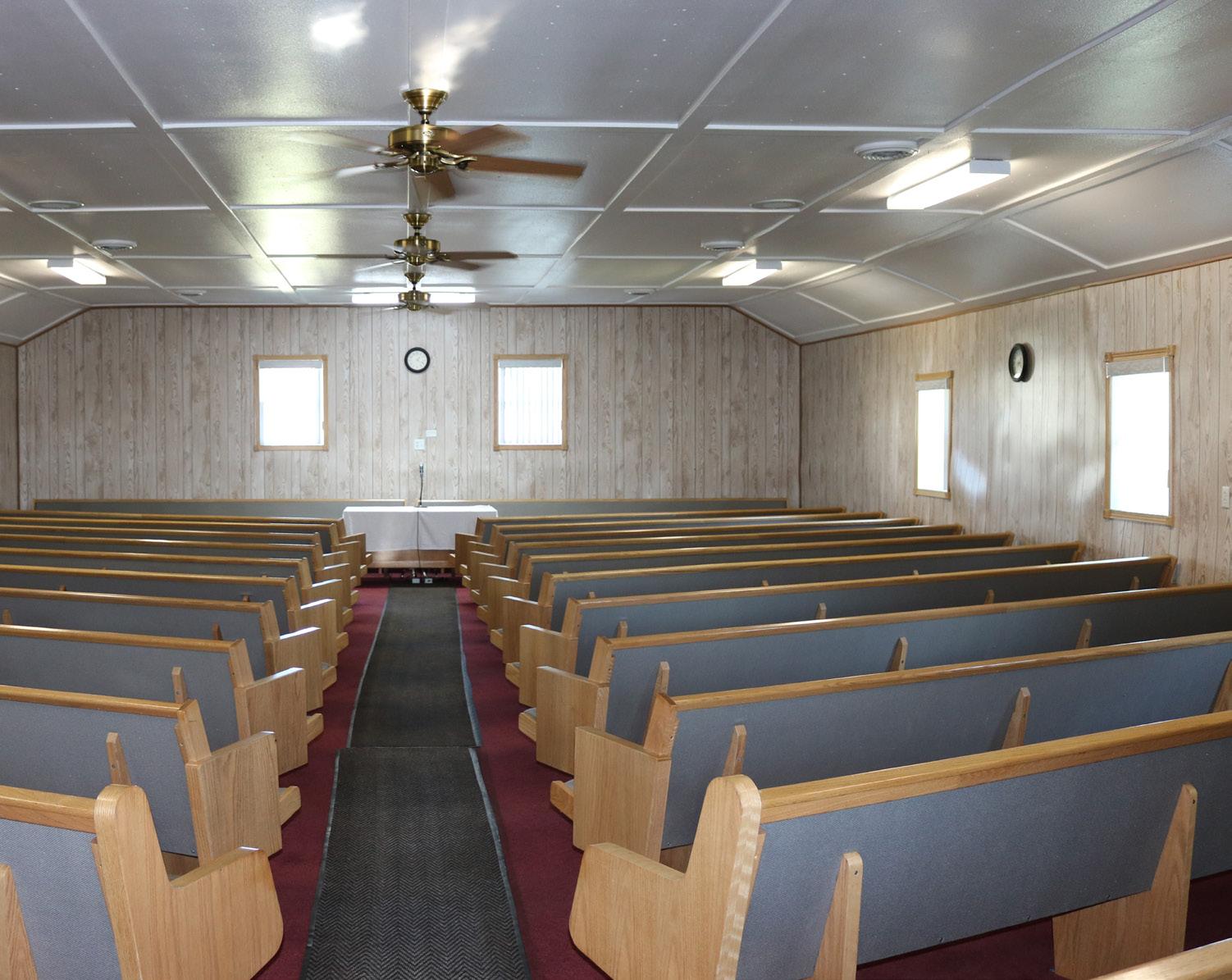
Bags full of feathers are hanging to dry before being turned into pillows and quilts.
Top
to Bottom:
View of the Vinyard, Hutterites make delicious wine. Laundry is centrally located, with homemade soap at the ready.
Inside the pre-cast concrete warehouse. Another staple industry at Platte.

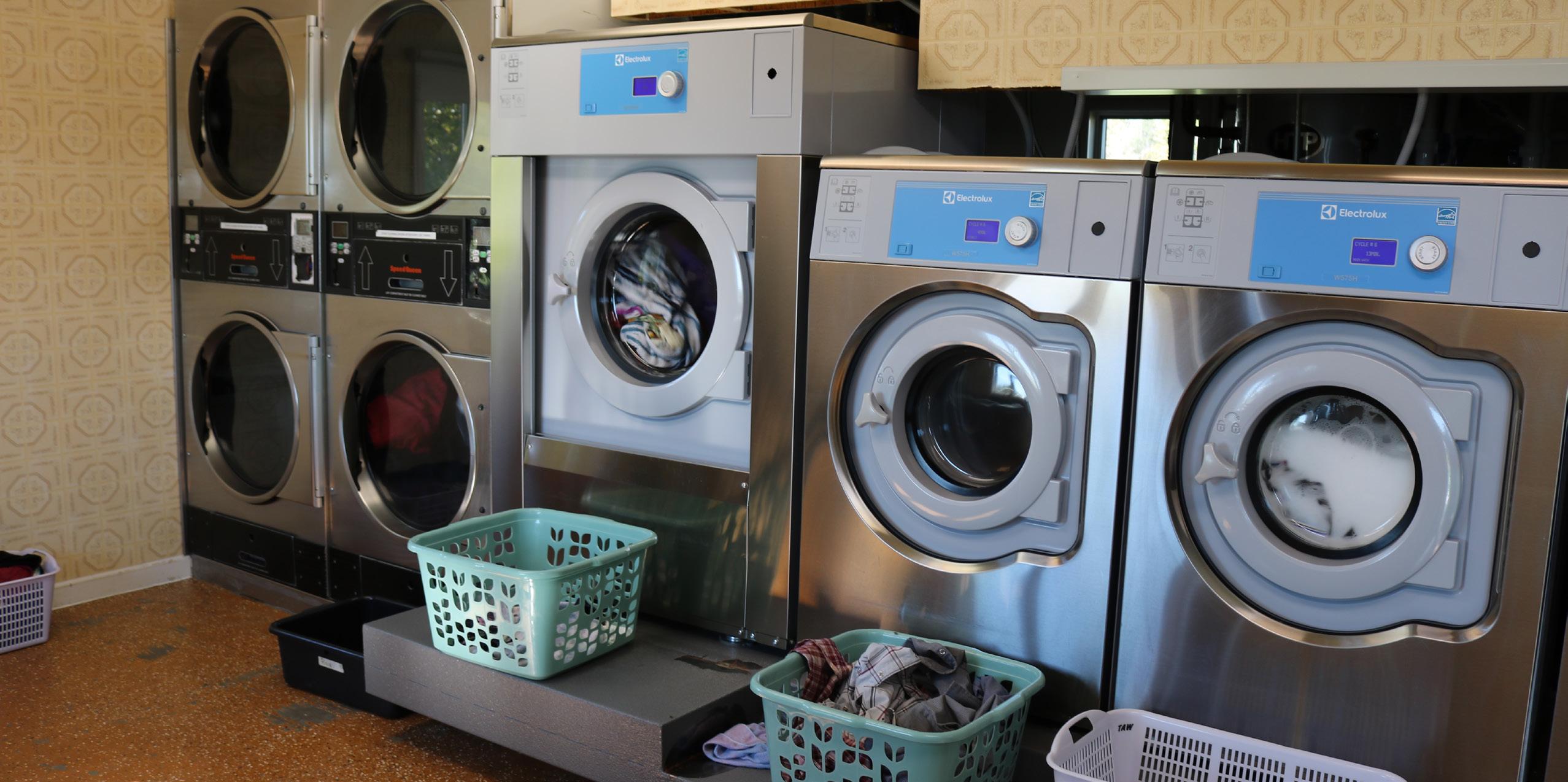

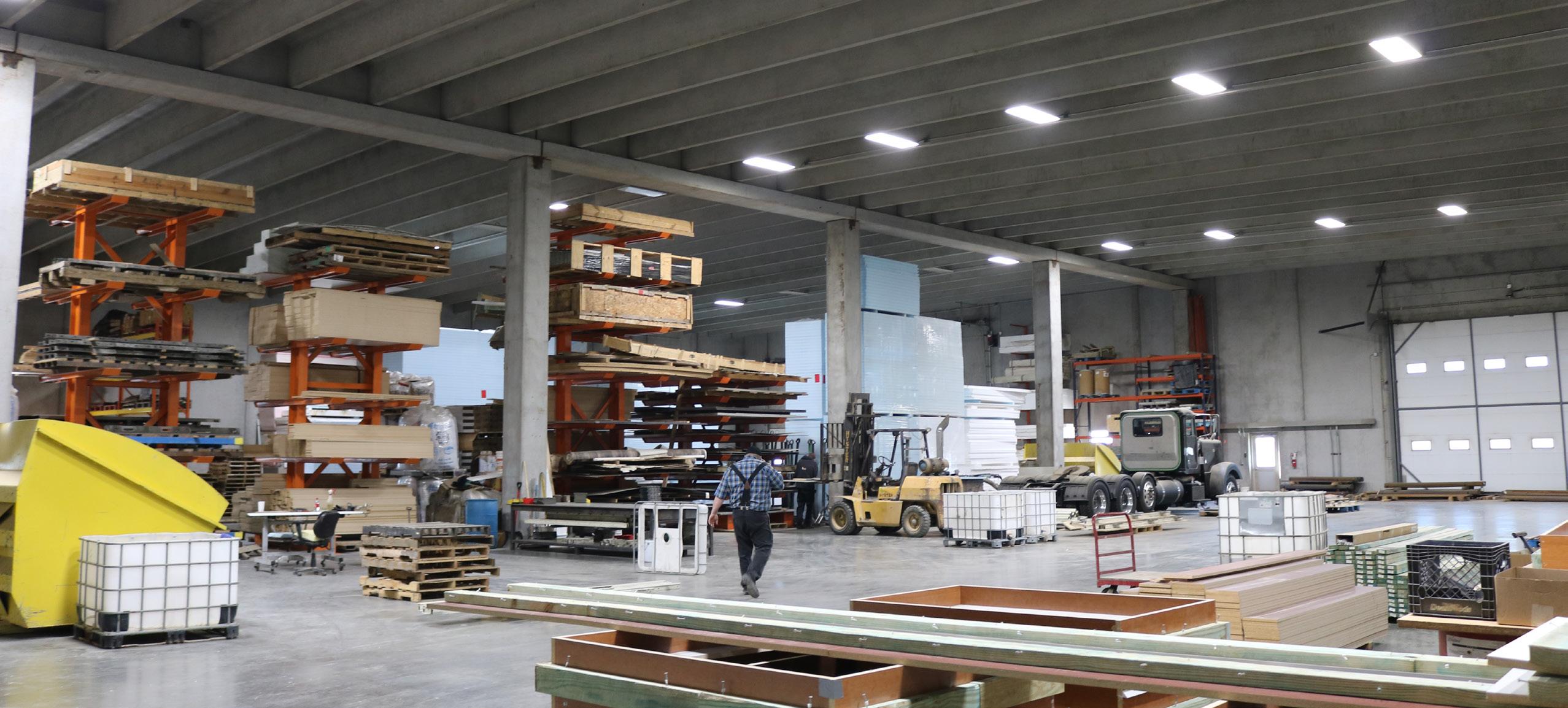
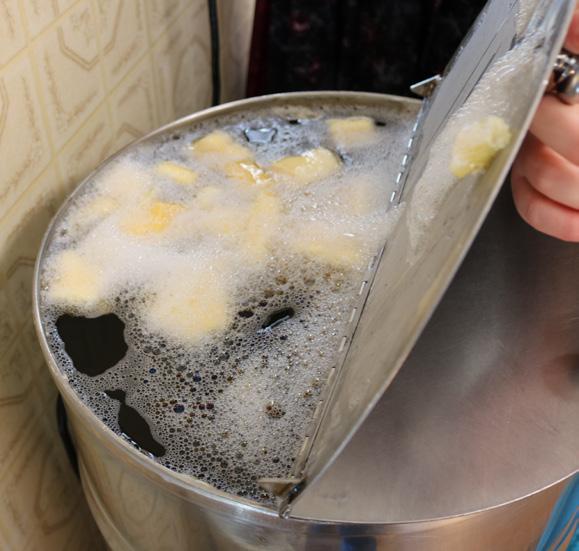
FROM THE PODCAST
In episode three of the Modern Producer Podcast, we welcomed Mikael Kirk of AGRISYS! Mikael and his company are based in Denmark and are a leader in sow equipment development worldwide.
AGRISYS Protein Automation was founded by Mikael in 2009. AGRISYS provides solutions for individual feeding and the foundation for optimal results.


Our discussion covers Mikael’s experiences in building and designing barns in China, Southeast Asia, and Europe. We explore new some new tech being rolled out and more! You don’t want to miss this episode. To learn more about Mikael and AGRISYS, please visit: https://agrisys.dk/GB.aspx
Mikael Kirk AGRISYS
Season 2 Episode 3
Scan To Listen!

NEW STANDARD:
MORE THAN PARTS, BUT WE HAVE THOSE TOO.
Ben Cochran has been at New Standard US since 2014. His daily tasks include taking care of the main office, warehouse, shipping and receiving, project quotes and, deliveries. His hands are on almost everything that goes on at the US branch.
“I enjoy the challenge of finding hard-to-find things and helping people get what they need to keep their work going,” states Ben.
Just in case you missed that quote, Ben is your hard-tofind part sourcing guru. So if you need it, Ben’s your guy.
When that vital machine or equipment is busted, we know waiting around for a part is not always an option. So we asked Ben what his top tips and tricks are to find replacement parts with haste.
Tip Number 1: Scour the part for any relevant information. For example, the manufacturer, part number(s), what kind of machine or equipment it is on, dates, and a detailed description of the part can provide a great place to begin our investigation.
Tip Number 2: GOOD PICTURES. When you can’t find the obvious info, a photo can often be worth a thousand words. Ben says, “just take a few detailed, close-up and well-lit photos. It can help a ton in the search.”
Tip Number 3: Don’t give up & Follow Up. Sometimes that first try at a replacement isn’t quite right. If that part doesn’t work, let us know, we often have multiple options to try, as trial and error is just part of the solution.
New Standard does its best to stock the most common and high-demand parts. If we don’t have what you need,

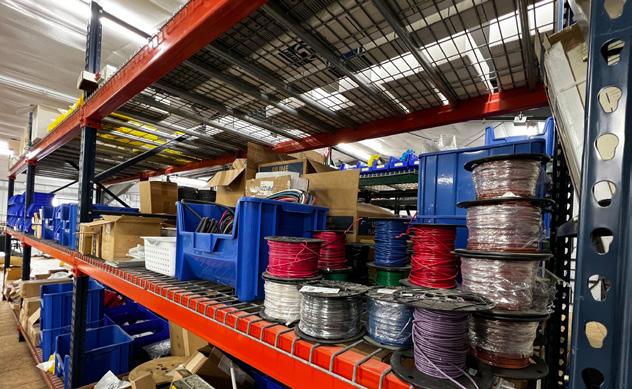



we’ll figure out who does and how to get it to you asap. Or we can help find an alternative solution to your issue.
We know some guys have older equipment that needs to keep running, so we have partners that can reproduce or make custom parts to keep some of your older equipment truckin’ along.

Ben says the biggest thing to remember - “I love hearing from customers and helping solve problems, give me a call. I thrive at working behind the scenes, and it’s a big part of why I love working at New Standard US. We take pride in what we do, but we’re not just a provider or equipment; we love serving our customers.”
So next time you hear the grinding of gears or the smell of some fried electronics, think New Standard. Ben is standing by.
33
COLORING
34
Kids COLOR ME!
CONTEST! HEY KIDS! COLOR THIS FOR A CHANCE TO WIN A $25 GIFT CARD. GRAB A PARENT AND SUBMIT YOUR ENTRY BY 3/1/2022! NAME AGE Scan To Enter!
Name: _________________________________________________ Word Search O L U X S N Y J H K Z S Z F H A S X H U J O H H Y R Y C Y C A V M A T N A B W Q J F T D L T Q G W J E N E T E G G D J C D X G O O W Y J K G D O M E S T I C A T E D B I R D S D H K T E N K E Q D D K C O T L D G B R C E K A M C R Z M D H K O S H E R R Q W P A K A H B C O A F P G Y E V S L W O F D R A Y N R A B I E T P L U W E E R D R E T S O O R M T Q J L D C N O F L J K L N L F X M S S T D M Y M F K D Q K N K L Q R E V W E Q L M H K C I H C D L Y K E E C E O U R R O F X U V B R O I L E R X A P N Z N T T T W V F R E L I O B R O A S T E R Y V V Q S Y H Q T G C U L K Z M H F W N F D M T F B X Y R W X Z B D P S C H E R I T A G E T O J M A Y L H X I F R E E R A N G E Q Y X F C M P I S D O F C R E Y R F O N E H A L A Y E R S A P Q Y
Find the following words in the puzzle. Words are hidden
Find the following words in the puzzle. Words are hidden and







BANTAM BANTY BARNYARD FOWLS BIDDY BOILER BROILER CAPON CHICK
BANTAM BANTY BARNYARD FOWLS BIDDY BOILER BROILER CAPON CHICK


Name: _________________________________________________
PULLETS
CHICKEN DOMESTICATED BIRDS FOWL FREE-RANGE FRYER HEELER HEN HERITAGE KOSHER LAYERS NET EGG
ROASTER ROOSTER TOM TURKEY
GREENWALD SOW STALL BARN TO LOOSE HOUSING REMODEL
New Standard Ag took on a renovation project located at Greenwald Colony, in Brokenhead, Manitoba, Canada. The renovations started in early January 2020. Before renovations, it was servicing 1200 head of sow. The crew and the client worked to get the barn fully empty in March. Renovations were completed and filled with sows at the beginning of August 2021. This was a great example of the fine eye for detail, taking advantage of space, and utilizing the whole facility to its full potential.
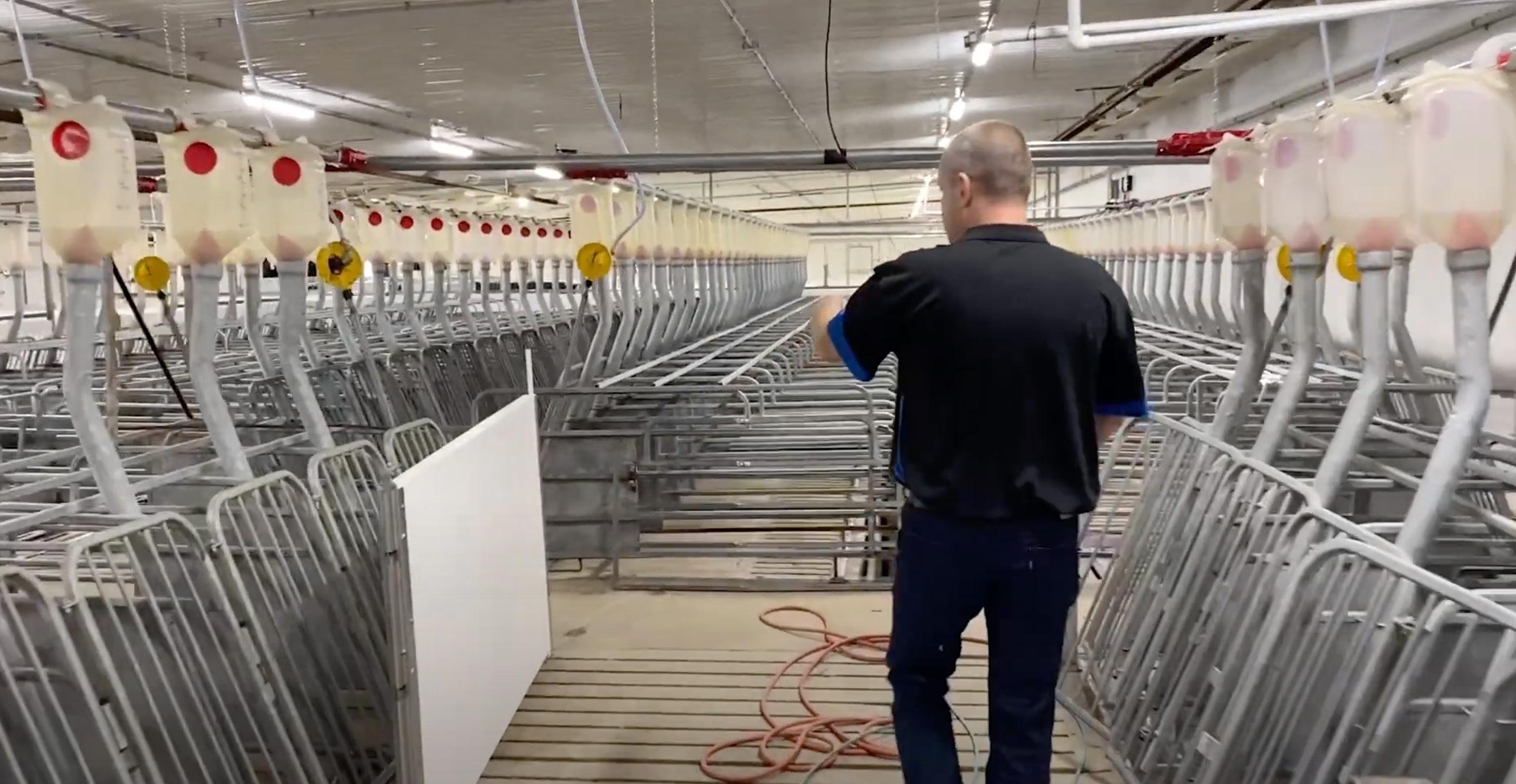
Gestation and Farrowing
• 1000+ head of sows
• Replaced the feed system with an installation of a chain disc on both sides of the barn
• 4 rows of breeding stalls + additional for overflow
• New gestation hardware installed (ESF)
• Batch farrowing every 2 weeks with 100 sows
• Variety of option styles (crating, penning, loose sow) for batch farrowing; giving sows a max of a week in the crates or penning for breeding
• Pens installed for sick beds or culls that will be transported out of the barn
• Separation pen for interaction after sows are bred
• Gates designed to harness sow from running into areas that they don’t need to be in, and help introduce newly bred sows
• 17 ESF Feeding Stations installed for bred sows, 1 station ESF for training
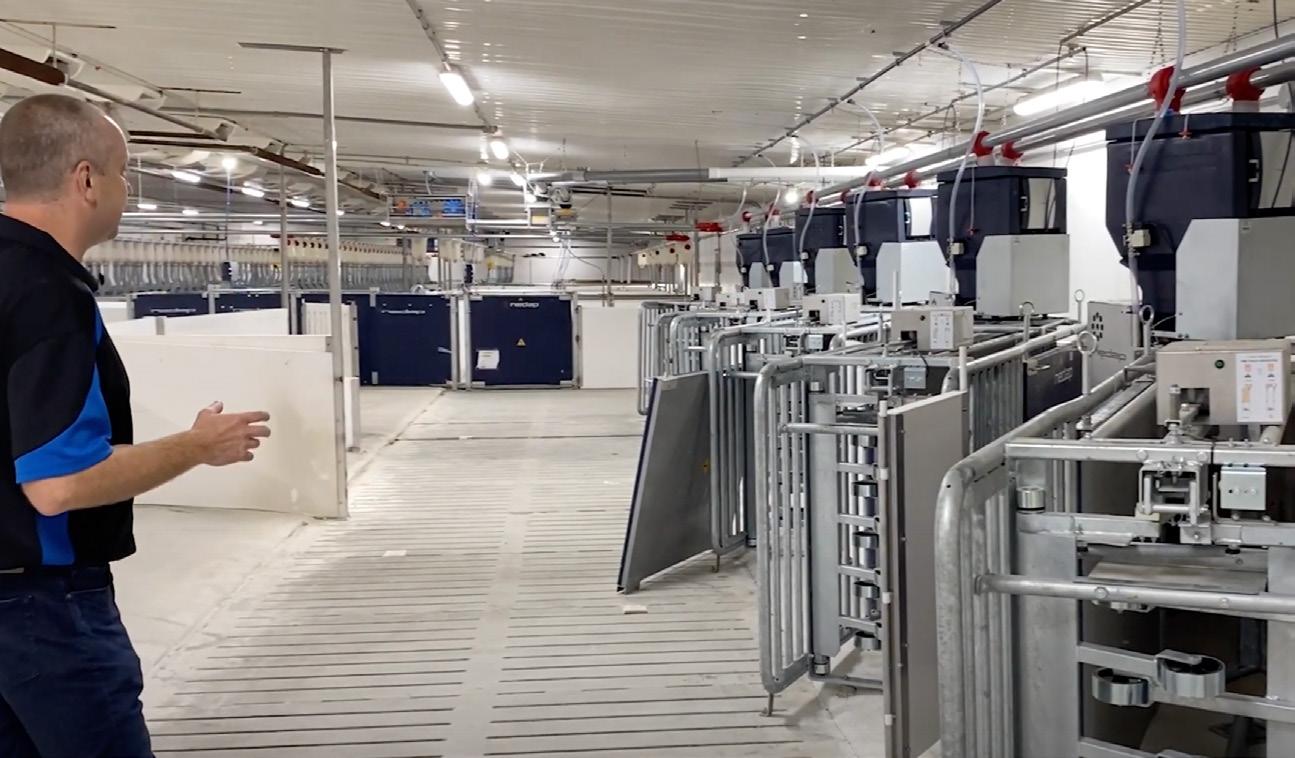

36
Barn Facts
• Originally designed as a 1,200 head sow barn
• Gestation stalls with old technology, trying to avoid aggression in sows (spindle metal side frame)
• Food dispensed in a trough along with water
• Slatted concrete flooring to solid concrete flooring
• Breeding and gestation separate rooms
Training Room
• Training in batches of 45-50 gilts, three weeks allotted for each training stage
• The first stage is pre-training (or self-training)
• 1 large pen with PanelTIM walling

• Dry ad-lib feeder on one side and water nipples on the other to promote circulation of pigs moving back and forth in the training pen
• Gates that are the same as entrance and exit gates mounted into hallways for travel between both sides
• After the first 2-3 days of familiarization in the pen, the gates are slowly closed over the next few weeks to allow the animals to learn how to operate them
• The second stage is access to an ESF for 3 weeks to train them to enter, stand and eat inside the station.
Other Features
• 3 large pens in different square footage depending on sow size for gestation
• RFID tags with backup information to cloud in case of replacement
• Sow weigher in each pen to collect data and assist with body conditioning


Construction and Manufacturing
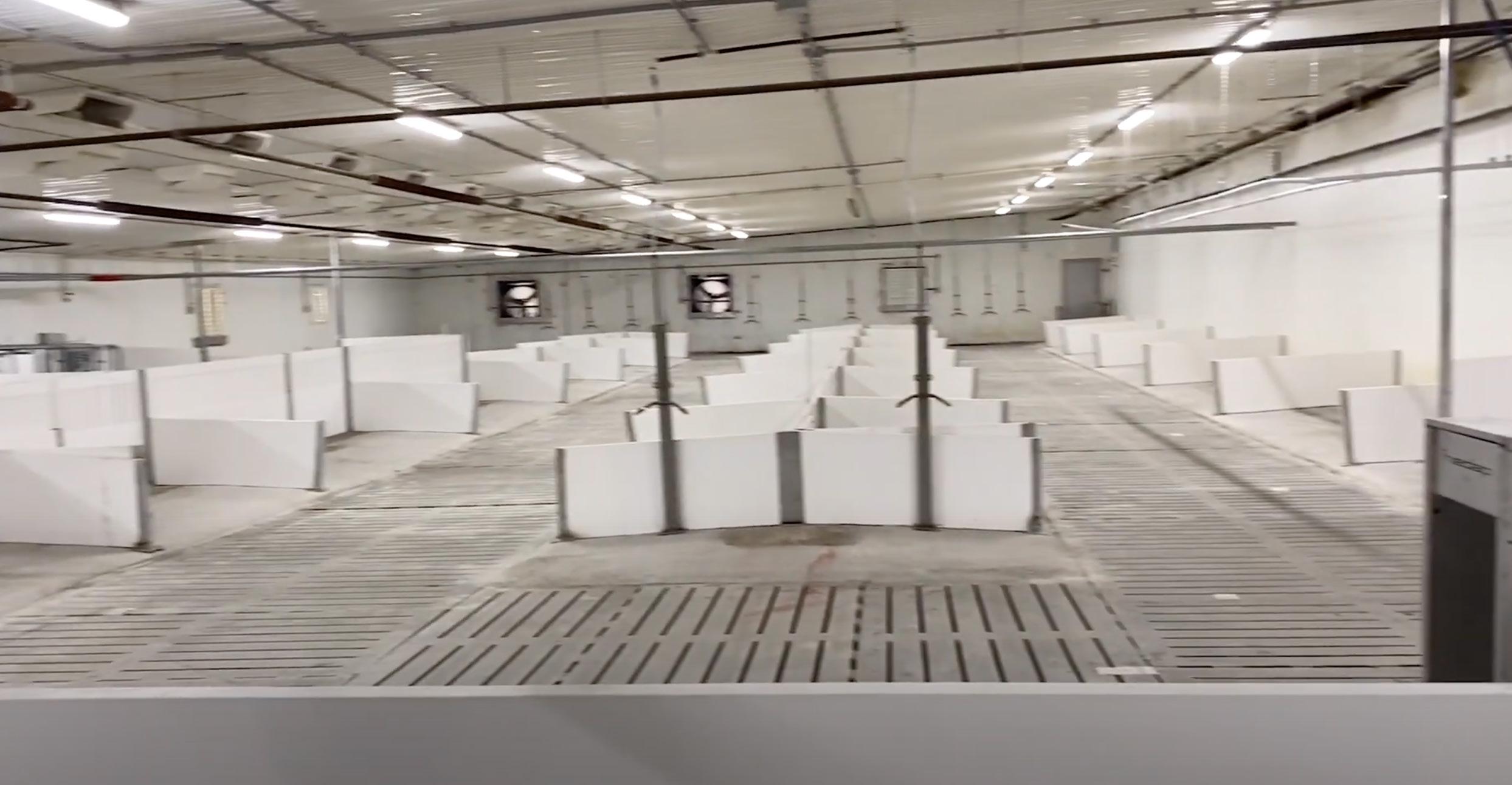
• Removal of old slats, and replaced with new slat flooring
• Skinned concrete over troughs
• Removal and replacement of solid concrete with an 8ft pit near the end of each hallway, required only in areas where animals will be traveling regularly
• Installation of new penning and ESF
• Installation of new chain feed conveying systems
WATCH ON

37

Welcome to the family, New Standard Group!

We are pleased to announce the successful merger of New Standard Group with the AgriHub Group of Companies, consisting of Penner Farm Services, Horizon Livestock & Poultry Supply, United Agri Systems and Western Ag Systems, effective Nov 1st/21. Having worked together on a number of previous projects, the merger was a natural progression.

Bringing together many decades of experience and knowledge will ensure each of our farming partners can benefit from a strong team of local sales and service personnel, as well as exceptional industry experts focusing on solution based design and on-farm performance improvements. With locations from British Columbia to Ontario, as well as South Dakota, USA, our farming partners will benefit from added product lines, deeper design resources and expanded service territory across each of our Hog, Poultry, Dairy, Grain and Power/Nutrition lines of business.
Please join us in celebrating this exciting news!
39
agrihub.ca


40 www.newstandard-group.com New Standard has three regional offices to bring their expertise in sow and poultry housing directly to you. New Standard US Tim Kurbis: 605-496-9696 info@newstandardus.com New Standard US 1200 E Robur Dr. Sioux Falls, SD 57104 New Standard Ag Kevin Kurbis: 204-485-4600 kevin@newstandardag.com New Standard Ag 961 Harriot Rd St. Andrews, MB R1A 4H6 New Standard West Kees (Kase) van Ittersum: 403-650-5051 kase@newstandardwest.com New Standard West 243159 RGE RD 281, Rocky View County, AB. T1X 2C4









 Cool Cells at Grand River Colony
Cool Cells at Grand River Colony







 By: Kevin Kurbis
By: Kevin Kurbis











































































